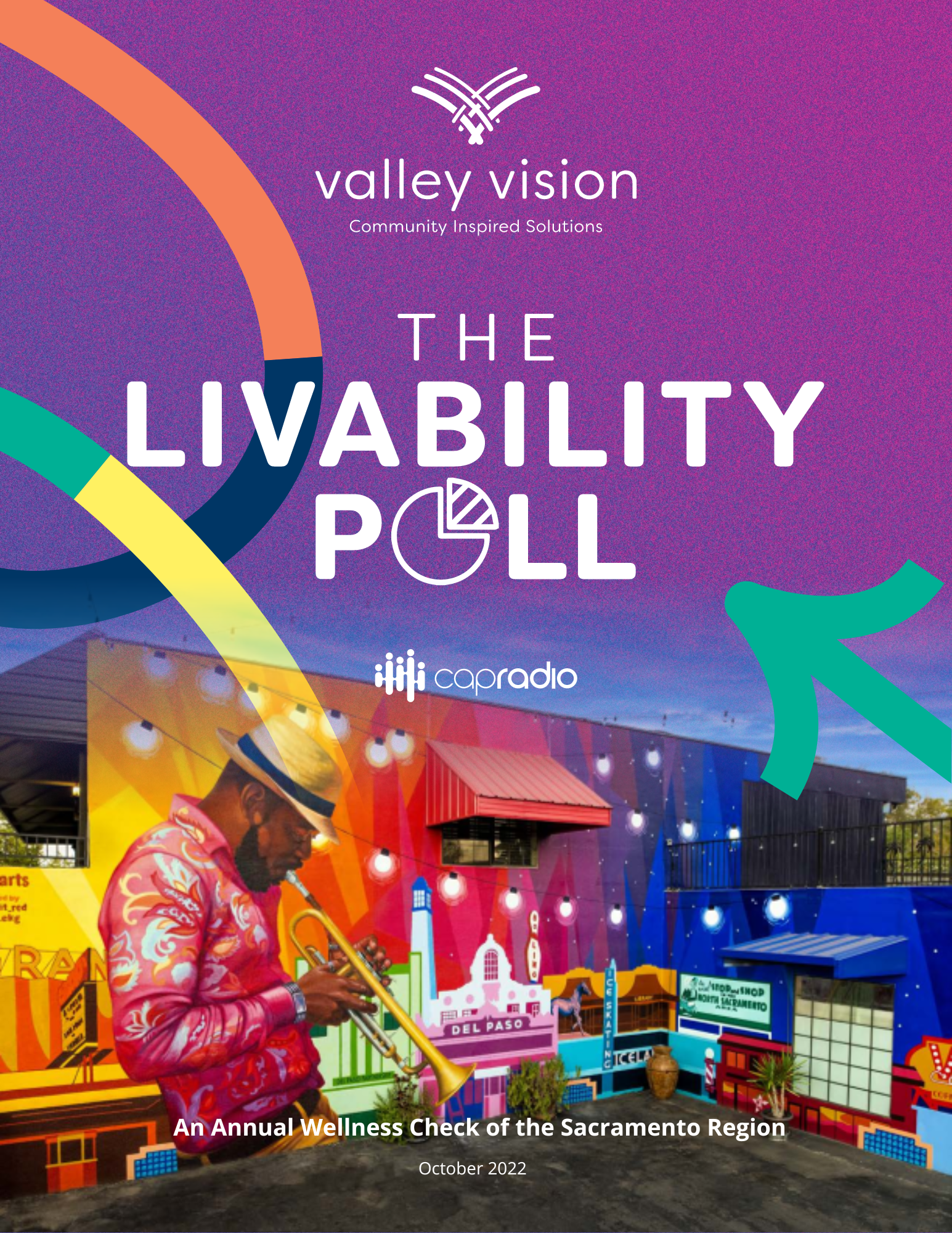Recap: Yolo Food Hub Network’s Barn Warming & Celebration in Esparto, CA
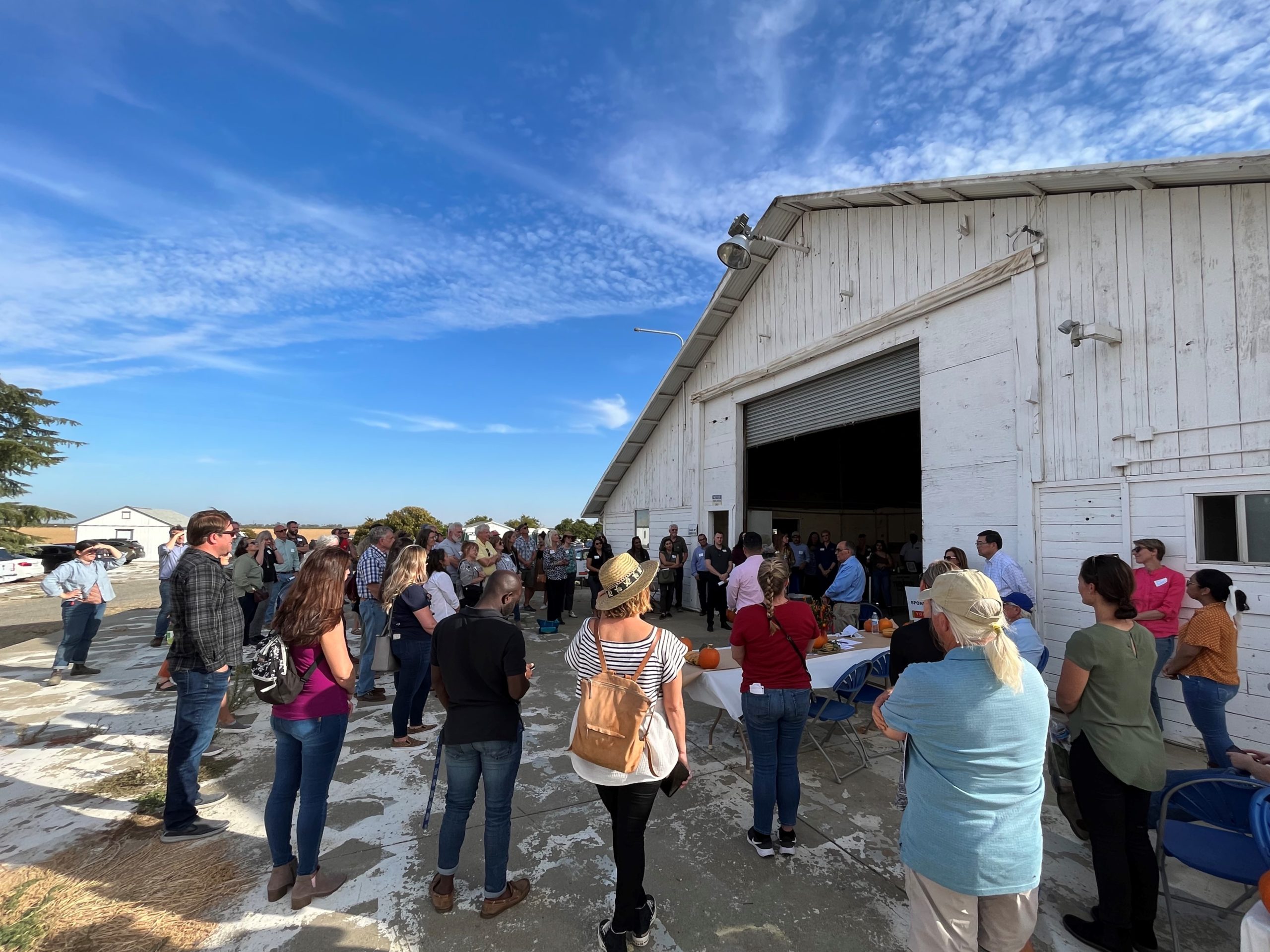
On Friday, October 21st, 2022 – a new home for food and agricultural infrastructure opened its doors to more than 115 people from across the region. The historic 22,000 square-foot Oakdale Barn, located in Esparto, California is over 100 years old, and as the anchor facility for the Yolo Food Hub Network, it will continue to serve the region’s agricultural industry. The Barn facility will be renovated to aggregate, process, store, package, and distribute produce grown in Yolo County and throughout the region. The facility will increase consumer and buyer access to healthy and diverse local foods, improve farmer and market sales, and will strengthen relationships between farmers, institutions, and local communities. It will open new markets for growers and food producers and will enable large institutions, such as hospitals, event centers, and schools to purchase locally grown foods. The barn warming, hosted by the Yolo Food Hub Network and Valley Vision, garnered the support of numerous organizations and representatives across Northern California.
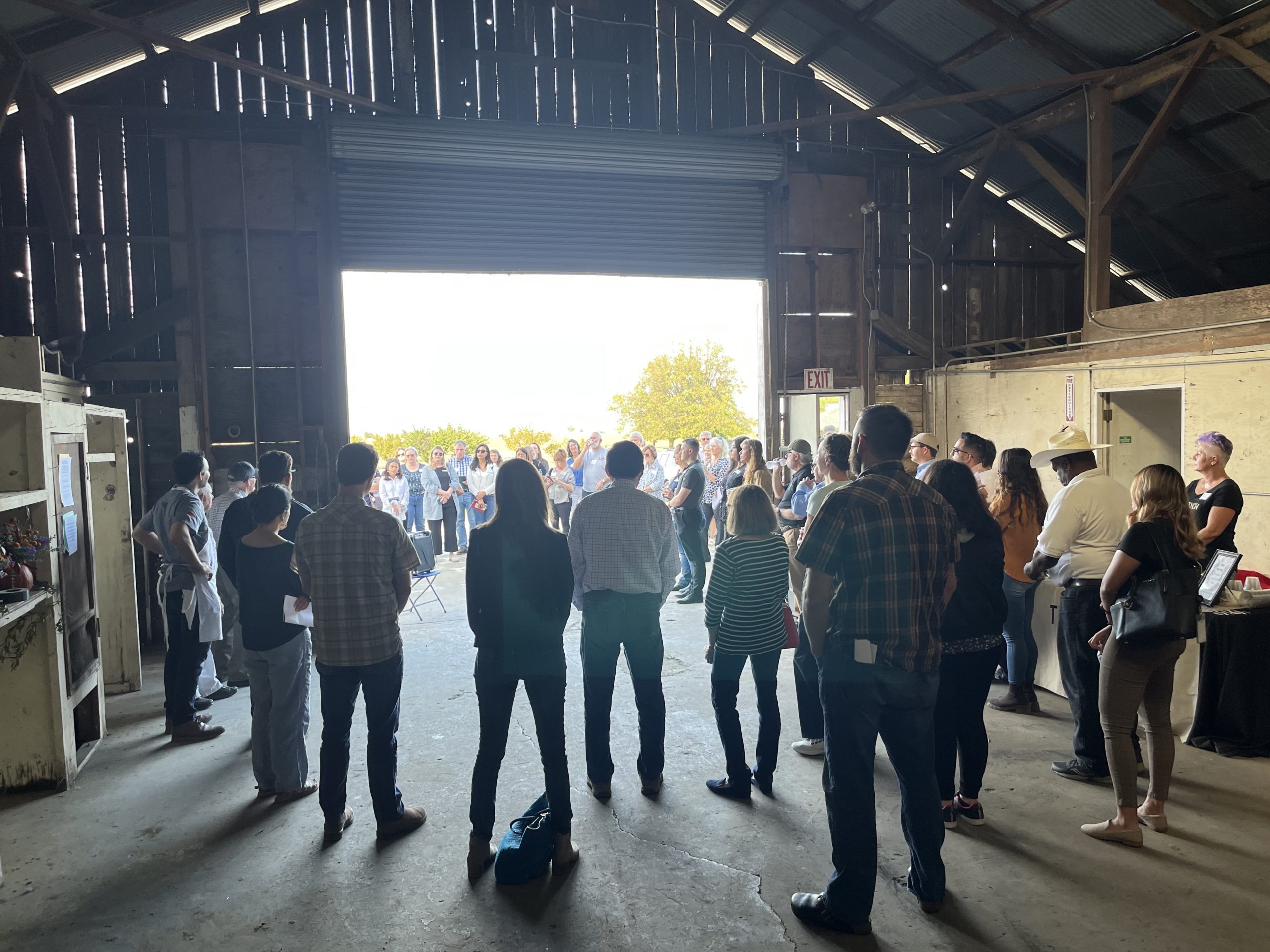

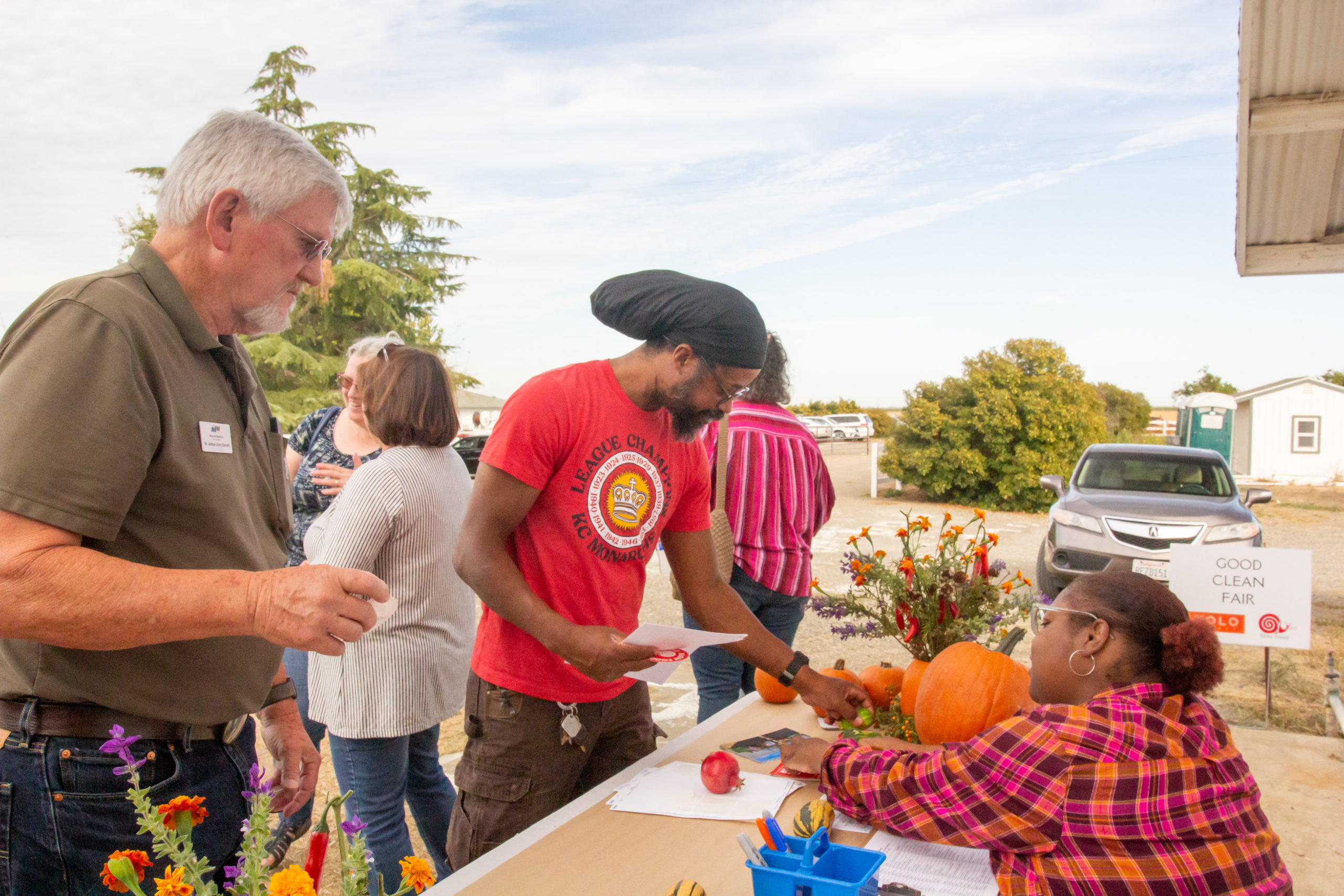
Valley Vision, on behalf of several local partners, was awarded a grant through the Local Food Promotion Program from USDA to support the planning phase of the project. Yolo County committed $2 million of American Rescue Plan funds for the site acquisition.
Food hubs help connect farmers and food entrepreneurs with regional markets and institutional buyers, such as schools, hospitals, and food banks, to access source-identified, locally-grown products. The project’s first phase developed recommendations and a funding strategy to help establish and sustain the new Yolo Food Hub Network and facility. As part of the planning phase of the Yolo Food Hub Network, the project will help farmers receive training on how to reach these institutional buyers, which will buy produce and goods from Yolo Food Hub Network partners.
The Yolo Food Hub Network project team includes New Season Community Development Corporation (NSCDC) – the project developer, Capay Valley Farm Shop (CVFS), Yolo Food Bank, Durst Organic Growers, Spork Food Hub, Esparto Train Station, Hatamiya Group, Kitchen Table Advisors, and Valley Vision as the project manager.
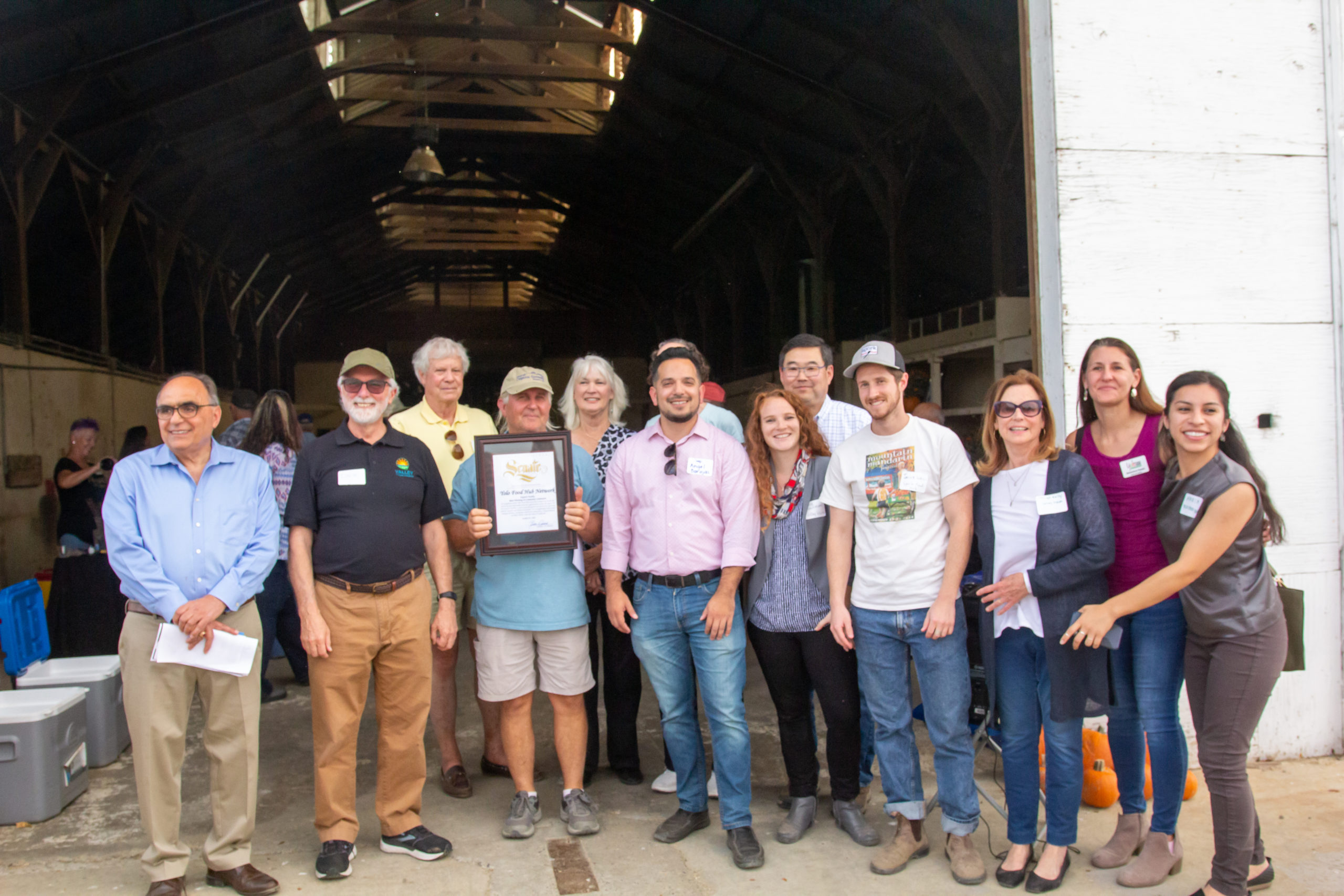
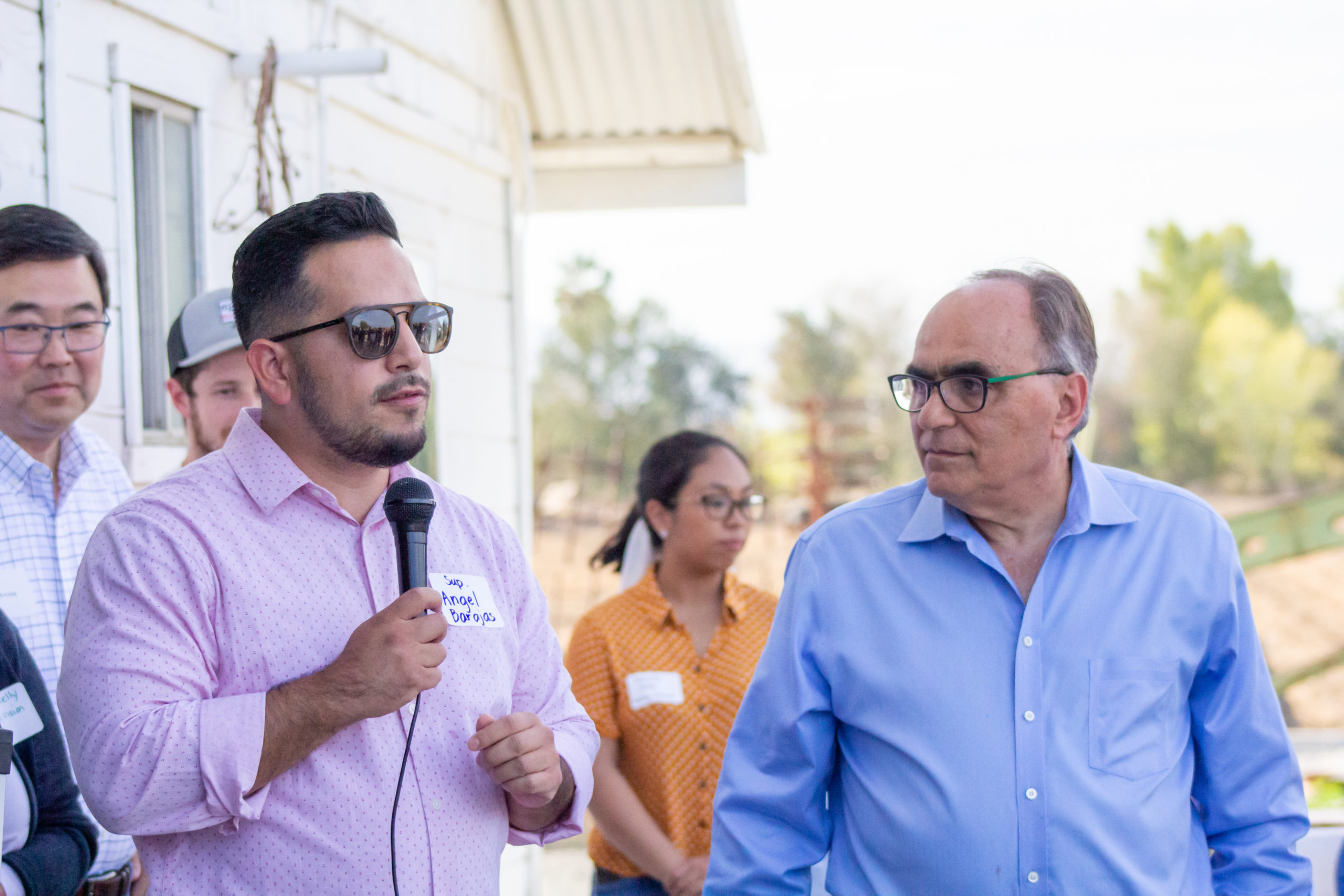
Many elected officials joined the celebration, including California Assemblymember Cecilia Aguiar-Curry District 4, California State Senator Dodd of Senate District 3, (Staff present), as well as Yolo County Supervisors Angel Barajas (Chair), Don Saylor, Jim Provenza, and Woodland City Council members Tom Stallard and Tania Garcia-Cadena.
Also in attendance was James Corless, Executive Director of the Sacramento Area Council of Governments (SACOG). Through SACOG’s Rural Urban Connection Strategy (RUCS), SACOG has supported the planning and feasibility of food hubs throughout the region, including the 2014 food hub feasibility analysis, which served as the foundation for the Yolo Food Hub Network.
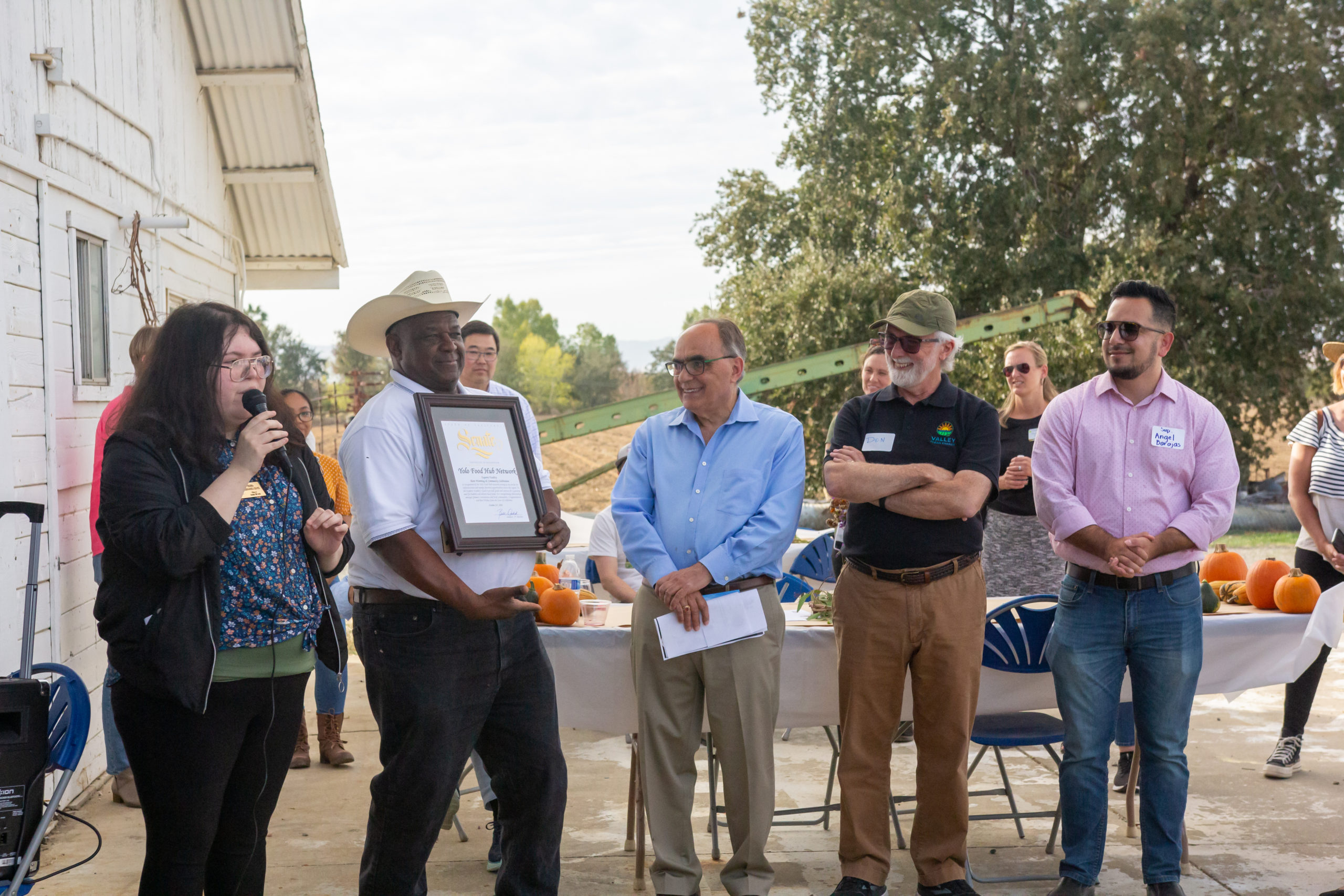
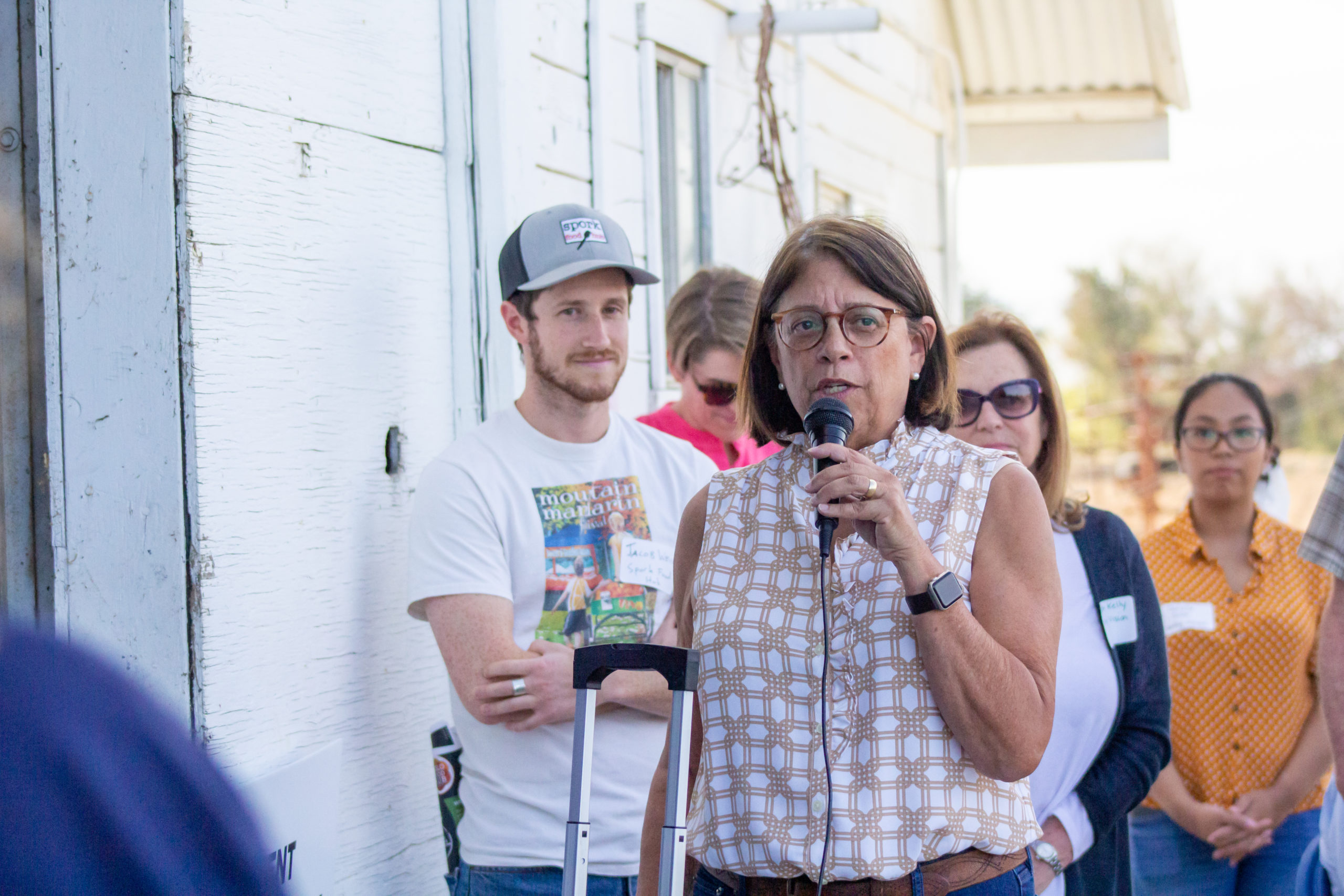
This event would not have been possible without the generous support of Slow Food Yolo, Turkovich Family Wines, and the hard work of Juan Barajas and his team. Slow Food is a global, grassroots organization, founded in 1989 to prevent the disappearance of local food, cultures, and traditions. Slow Food believes food is tied to many other aspects of life, including culture, politics, agriculture, and the environment.
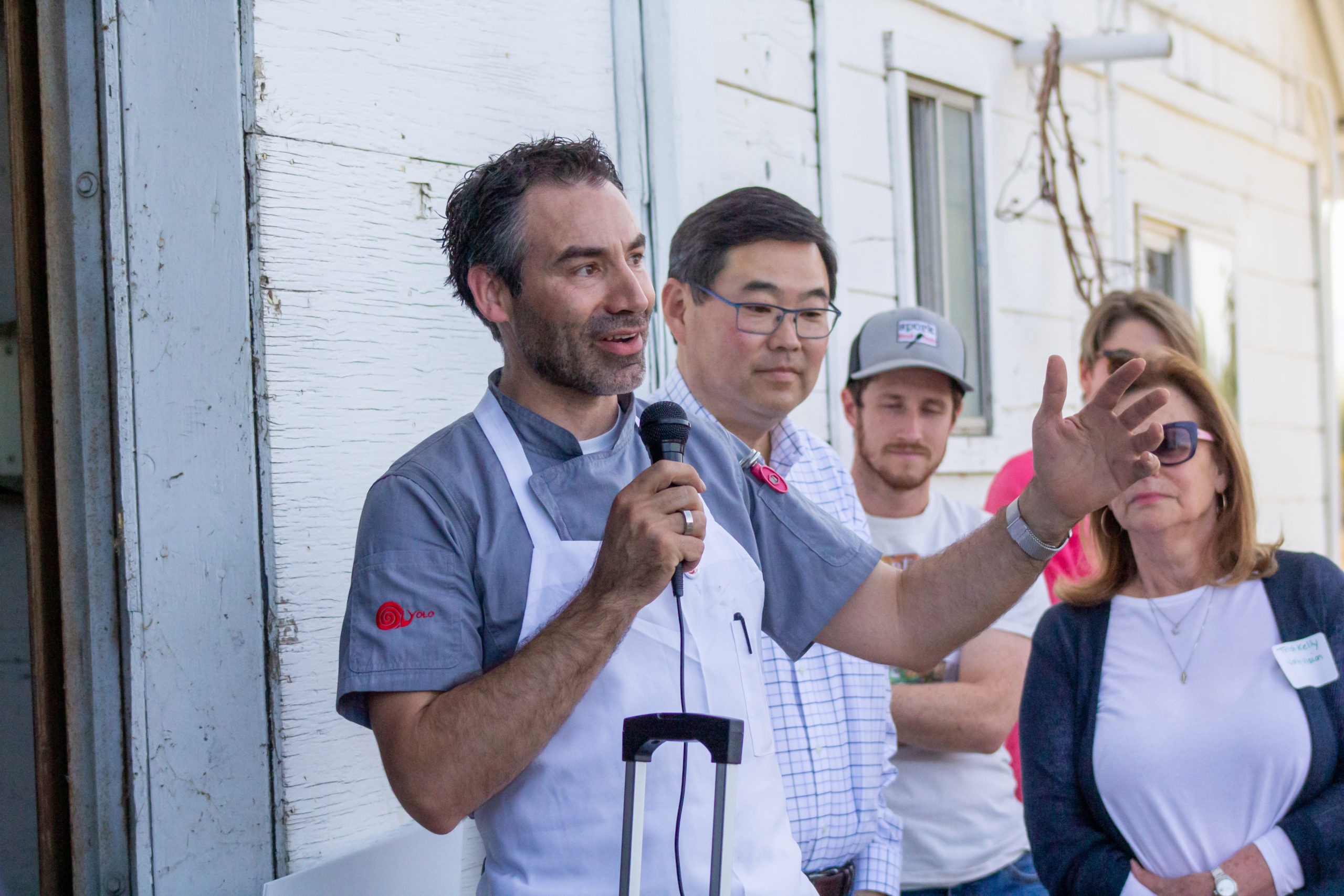


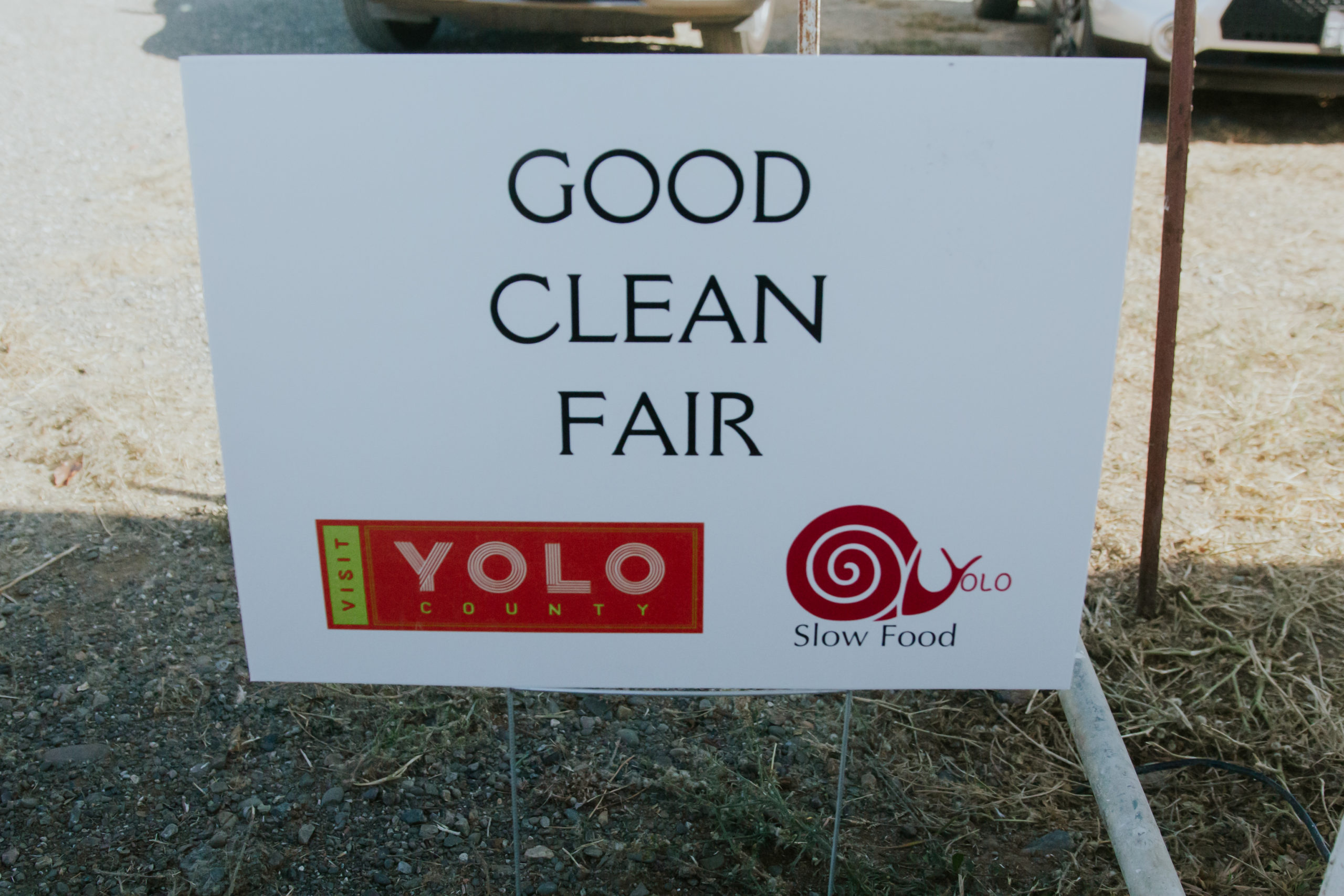
To learn more about the Yolo Food Hub Network, including past webinars and reports, visit: https://www.valleyvision.org/projects/yolo-food-hub.
For questions about Yolo Food Hub Network or if you want to receive future resources and information on the upcoming Food and Agricultural work from Valley Vision, please contact Grace Kaufman at Grace.Kaufman@valleyvision.org to be added to the listerv!
Grace Kaufman is a Valley Vision Project Manager working in the Food and Ag and Clean Economy impact areas
Watch the recap video from the Barn Warming & Celebration below!
Sacramento Region Awarded $5 Million for Inclusive Economic Planning
Sacramento, CA – October 21, 2022: The Sacramento Region scored a significant win via an award of $5 million dollars in planning money from the Community Economic Resilience Fund (“CERF”) program.
The program – developed and led by the Employment Development Department (EDD), the Governor’s Office of Business and Economic Development (Go-Biz), and the Governor’s Office of Planning and Research (OPR) – advances regional economic recovery and resilience strategies that prioritize the creation of accessible, high-quality jobs in sustainable industries.
“This is a once-in-a-generation opportunity to advance our region’s economic recovery and resilience, and will demonstrate the collective value and impact our region has when we work together,” said Valley Vision CEO Evan Schmidt in a statement.
Planning dollars will be used to stand up a High Road Transition Collaborative (“Collaborative”) – a planning group that consists of balanced and meaningful representation from throughout the region – and a regional economic development plan.
In a months-long grant application process, Valley Vision convened multiple open-to-all webinars, workshops, subregional roundtables, and activity-based committees to inform our region’s application. In particular, the Prosperity Partnership, the Tahoe Prosperity Center, the Sierra Business Council, Yuba-Sutter Economic Development Corporation, the Nevada County Economic Resource Council, and the counties of Colusa and Yuba were instrumental in bringing regional stakeholders and community partners to the table.
As the designated Regional Convenor and Fiscal Agent for the Sacramento Region – which includes Colusa, El Dorado, Nevada, Placer, Sacramento, Sutter, Yolo and Yuba counties – Valley Vision is charged with standing up a planning process that engages meaningfully across subregions, sectors, and communities, to advance the goals of the CERF program.
“This announcement signifies a major step forward in economic development, as regional coalitions have come together across California ready to roll up their sleeves and build regional economic development strategies that will create more inclusive and vibrant economies built on a foundation of equity,” said Dee Dee Myers, Senior Advisor to Governor Newsom and Director of the Governor’s Office of Business & Economic Development. You can read the state’s CERF press release here.
A Sacramento Region virtual kick-off event will be held in early 2023. To stay up to date, subscribe to Valley Vision’s Sacramento Region CERF newsletter.
###
About Valley Vision
For 27 years, Valley Vision has served as a trusted nonprofit civic leadership organization in the region, bringing communities together to tackle our region’s challenges and ensure a more livable future and creating common ground built on facts through trusted research and meaningful coalition-building.
Driven by a “triple bottom line” approach of co-equally advancing social equity, economic prosperity, and environmental sustainability, Valley Vision has a proven record in bringing diverse groups together to develop long-term solutions to the region’s greatest problems. This history of civic leadership and engagement runs across local, regional, and statewide platforms, and across sectors and disciplines. To learn more about Valley Vision’s CERF work, visit www.valleyvision.org/projects/community-economic-resilience-fund.
Media Contact:
Priya Kumar
(707) 386-8501
priya.kumar@valleyvision.org
The Capital Region’s Workforce—Ready to Evolve
The Livability Poll is a broad-based quality-of-life survey developed by Valley Vision and CapRadio in collaboration with the Institute for Social Research at Sacramento State University. Valley Vision conducted the poll to assess Sacramento residents’ experiences with issues related to housing, access to services, job and career satisfaction, safety and belonging, and residents’ perceptions of the Sacramento Region. Among many topics, the Poll results provide insight into how community residents view their employability.
The Poll was in the field from mid-June to mid-July of 2022. It is demographically representative of the Capital Region, encompassing Sacramento, El Dorado, Placer, Sutter, Yolo, and Yuba counties, and has a margin of error of plus or minus 2.3 percent
Overall satisfaction with employment is high, but a stark contrast can be seen when broken down into categories like race. The most cited reasons for dissatisfaction were low wages; not enough opportunities for promotion; and poor workplace culture. However, feelings of optimism in younger people in the workforce when it comes to employability have risen from previous polls that Valley Vision fielded during the height of the pandemic. As the future of workers continues to change, it was found that more than two-thirds of residents are interested in learning new skills or improving their skills through education and training.
However, the delivery method is key to ensuring residents can access education and training programs. Residents expressed preferences for:
- Programs that last a year or less (72 percent),
- Hybrid (53 percent) or remote (57 percent) programs, and
- Flexible or weekend hours (62 percent)
In order for our region to keep pace with changing industry needs, our communities need flexible and accessible training programs to upskill and increase their economic mobility actively.
While this data confirms the need for equitable career advancement opportunities, the numbers also paint a picture of what is possible. The Capital Region’s workforce is ready to evolve, and our region’s workforce stakeholders have an opportunity to deliver innovative, accessible training solutions to meet their needs. The full 2022 Livability Poll Report can be accessed here.
To keep up with Valley Vision’s work to advance a future-ready workforce in the Sacramento region, subscribe to our 21st Century Workforce email newsletter!
Angelina Olweny is a Valley Vision Project Associate supporting initiatives within the 21st Century Workforce impact area.
Gustavo Garcia is a Valley Vision Project Associate supporting initiatives within the 21st Century Workforce impact area.
Danielle Susa is a Valley Vision Project Associate supporting initiatives within the 21st Century Workforce impact area.
The Livability Summit: Virtuous Circle of Connection
What is Livability?
This is a serious question, not a rhetorical one. We asked this question of community members from all across the region, from different neighborhoods, ages, races, and professions. What we learned is that livability is not the same for everyone.
Responses ranged from housing to safety, good and abundant food to a quality education, and diverse cultural communities to a livable income. Indeed these are all important factors that provide a good quality of life, which proves that livability isn’t just one thing, it’s the combination of many things.
For me, the most poignant and clearest definition of livability that I heard came from a 20-year-old UC Davis student who moderated a youth discussion at Livability Summit on October 4th at Sac State. Tate told the audience of more than 300 that livability isn’t just about having what you need in life, it’s about living a happy life.
Valley Vision’s inaugural Livability Summit was designed to create a data-informed community discussion between diverse networks of people who could exchange views and ideas about the issues that affect us most. The Livability Summit was also about belonging and being heard in a forum where community voices can make a difference. That’s why the Summit tagline “Your voice belongs. Your voice makes change.” was the foundation to community-building and collaborative change-making.
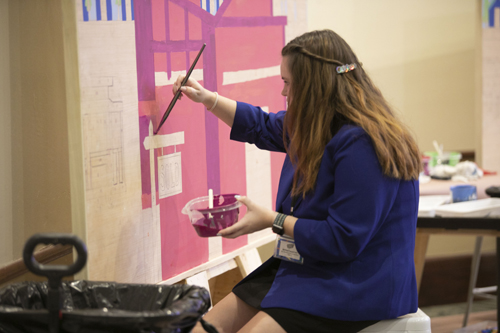


Like others, our region is more disconnected, isolated, and divided than ever before. To counter these challenges and to leverage Valley Vision’s unique purpose of building more livable communities, the Summit proved to be a dynamic day that combined informative and inspirational presentations with small group dialogue, community-building, and interactive experiences.
Coming out of the event and reflecting on the experience, it’s more clear to me that cultivating connection and belonging creates a virtuous loop – you give something positive to others and inevitably you get back something positive that you couldn’t have anticipated. The energy and inspiration that we got back from those who participated was not only inspiring and uplifting but also cemented our desire to continue cultivating these important community connections.
I want to thank the community for coming together with us in a different kind of way, to engage in difficult conversations, and for being willing to bring an open mind and make change that can benefit us all. I am incredibly inspired by the conversations, connections, and collaborations that occurred at the Livability Summit and ready to build off that momentum to leverage Valley Vision’s role in advancing livable communities, especially in those neighborhoods that have long been uninvested and overlooked.
The Summit occured on one day, but the outcomes will carry on through Valley Vision’s work in the months and years ahead. If you were unable to attend this first-time event, I’d like to leave you with a few of the inspirational sentiments that attendees shared with us and hope that you will join us next fall for the first annual Livability Summit. We will announce dates soon.

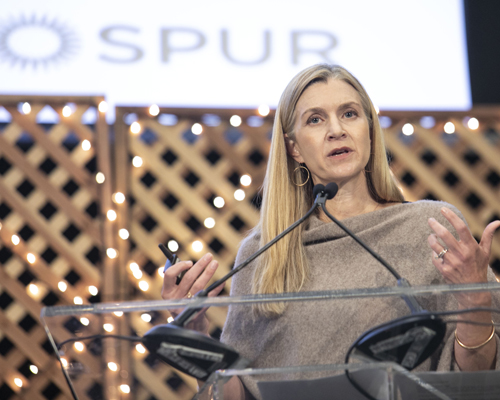
“Keep doing what is right even though it is not easy. ”
“Community connection and belonging are key to livability – keep making it happen.”
“Change happens at the speed of trust!”
“Revitalize and reimagine your community.”
“Youth voices are needed at the table. It’s not enough for them to have a seat at the table – they need to feel they have a voice and the sense of belonging at the table.”
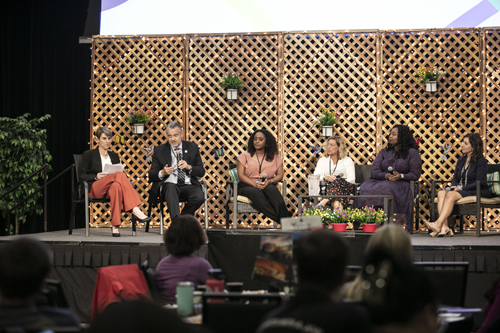
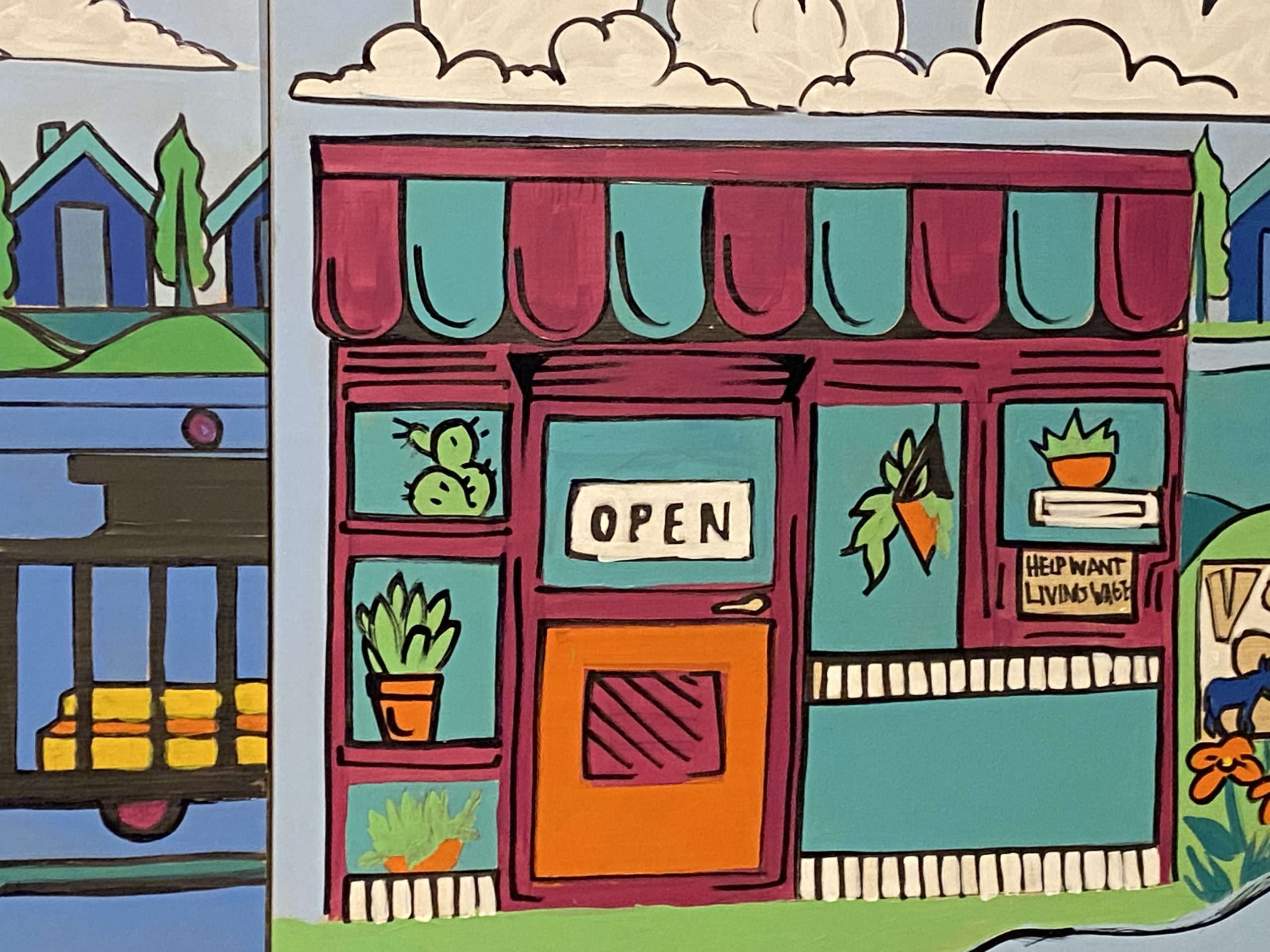
State Workforce Leaders Moving Forward Together
Valley Vision’s Renee John, Director of Workforce Development, recently attended the California Workforce Association’s annual Meeting of the Minds Conference themed Courageous Progress. A central topic was the Governor’s priority on apprenticeships as one of three key workforce strategies to address California’s wide scale income inequality challenges. A five-point action plan was recently released from the Labor and Workforce Development Agency and the Department of Industrial Relations Department of Apprenticeship Standards outlining a strategy to expand apprenticeship in California to meet Governor Newsom’s goal of serving 500,000 apprentices by 2029.
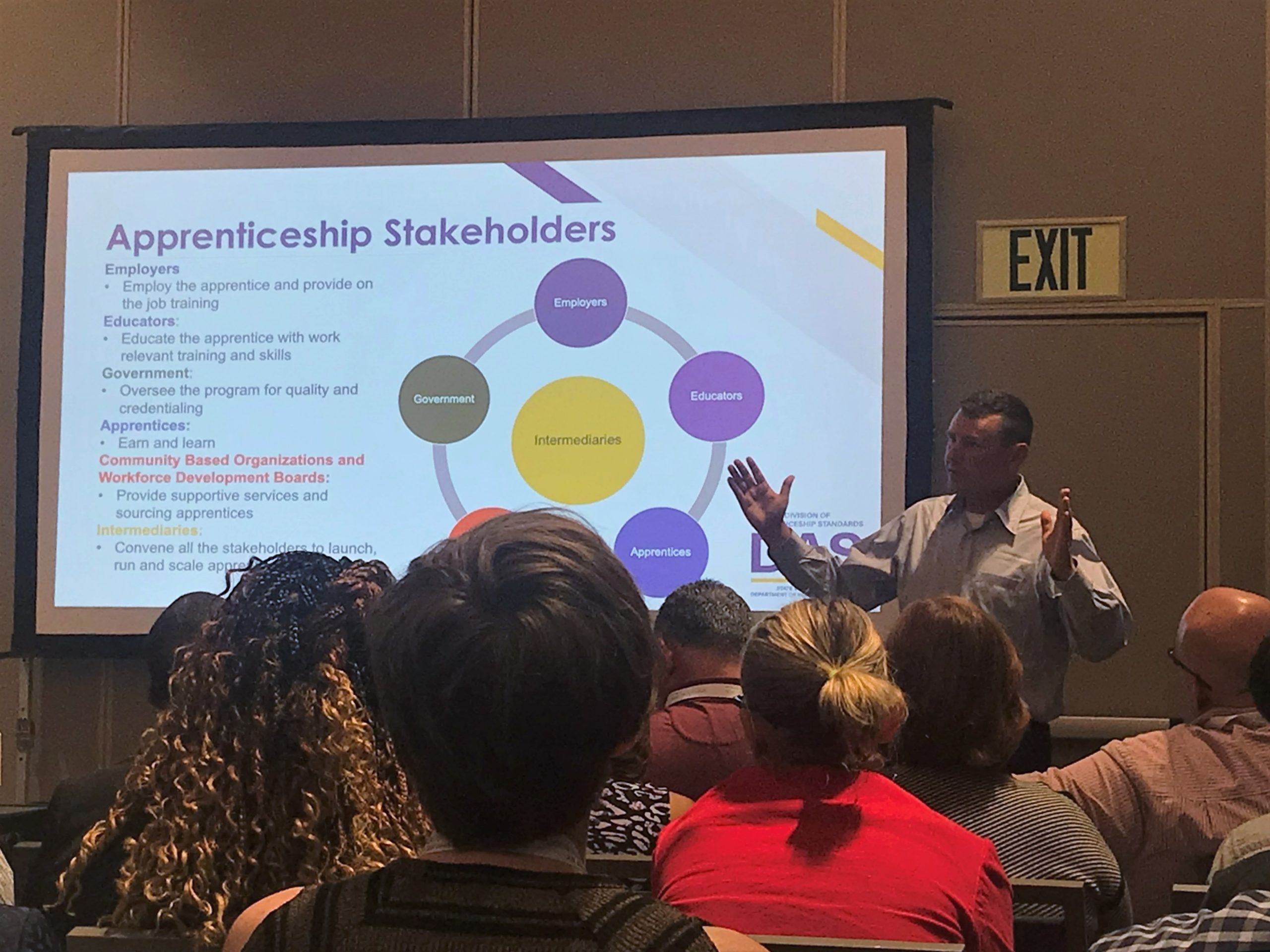
The conference, held in Monterey, featured speakers from across the state including: Tim Rainey, Executive Director California Workforce Development Board; Brent Parton, Acting Assistant Secretary DOLETA; and Eric Rood, Chief Division of Apprenticeship Standards at California Department of Industrial Relations. Informative sessions addressed topics including developing high quality youth and adult apprenticeships, digital upskilling innovations, service delivery models to serve the priority populations including re-entry and individuals with disabilities, and sector specific workforce pipeline initiatives. The importance of strategically aligning efforts between workforce stakeholders was a central theme. Each session featured inventive collaborations between K-12, adult education, community colleges, economic development, community based organizations, and others.
As the workforce intermediary for the Greater Sacramento Capital Region, Valley Vision spends significant resources on convening and alignment, connecting partners in our ecosystem together to develop solutions and function as a cohesive unit in service to their stakeholders. We assist cities, jurisdictions and partners with developing strategies to meet their economic and labor goals. We are a trusted source for quality research on workforce issues and trends to inform on changing market dynamics. And, we continually work to amplify voices and strategies to connect equity to economic prosperity to create a vibrant and prosperous economy for all.
For the more information on Valley Vision’s 21st Century Workforce impact area connect to our website and subscribe to our 21st Century Workforce email newsletter!
Valley Vision’s employer and industry advisories are funded by Los Rios Community College District with Strong Workforce Program funds. Additionally, the Capital Region’s four workforce boards co-sponsor the advisories; SETA/Sacramento Works, Golden Sierra JTA, YoloWorks, and North Central Counties Consortium.
Renee John is the Director of Workforce Development managing initiatives within the 21st Century Workforce impact area.
Recap: White House Conference – Recommendations from America’s Farm-to-Fork Capital
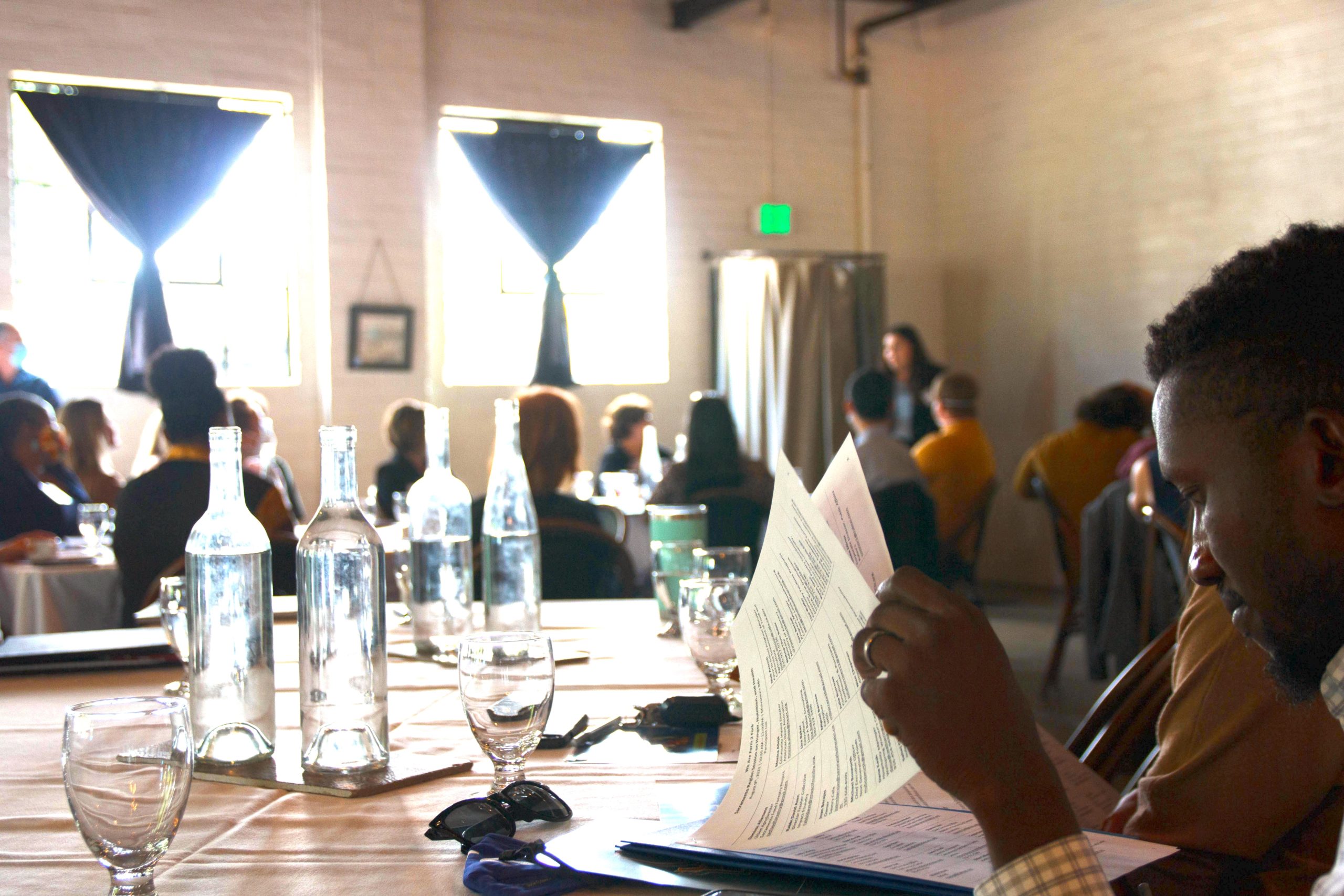
As part of the We Are Farm-to-Fork initiative, Valley Vision convenes partners and community members to support future investments in the region’s food system.
On Tuesday, August 9th, Valley Vision held our first public, in-person event since the pandemic. The information shared by community partners during the listening session will inform the 2022 White House Conference on Hunger, Nutrition, and Health, which takes place in September. Organized under the banner of our community food system network “We are Farm to Fork,” participants included a vibrant cross-section of more than 75 people at Mulvaney’s B&L, including partners from government agencies, nonprofits, school districts, restaurants, health centers, grocery stores, and more (see Appendix A of the report for a full list of participants). It was an honor to have Maria Gallegos-Herrera, the new USDA Rural Development State Director for California, attend and provide opening remarks, as well as have staff from Congresswoman Doris Matsui and Congressman Ami Bera join us and advance the recommendations.
Using the toolkit provided by the White House Conference planners as a guide for regional input sessions nationally, our discussion focused on the following guiding pillars of the Conference:
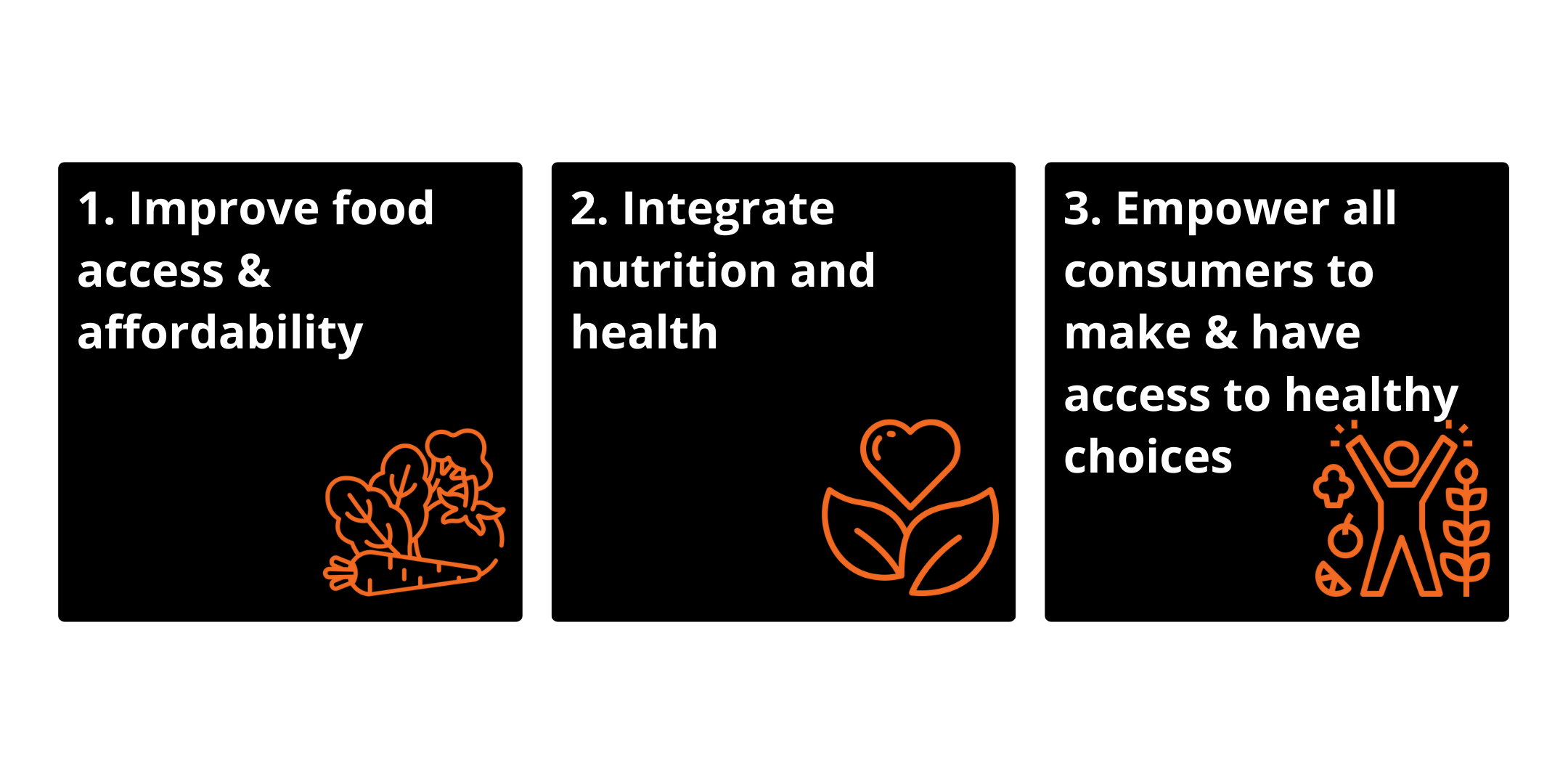
For each of these issues, our event invited input into the following questions provided by the White House Conference planners:
What specific actions should the U.S. Federal government, including the Executive Branch and Congress, take to achieve each pillar? What are the opportunities and barriers to achieving the actions? Actions should include specific policy and/or programmatic ideas and changes as well as funding needs.
What are innovative public- and private-sector activities already happening at the local, state, territory, and Tribal levels that could inform actions at the Federal Level?
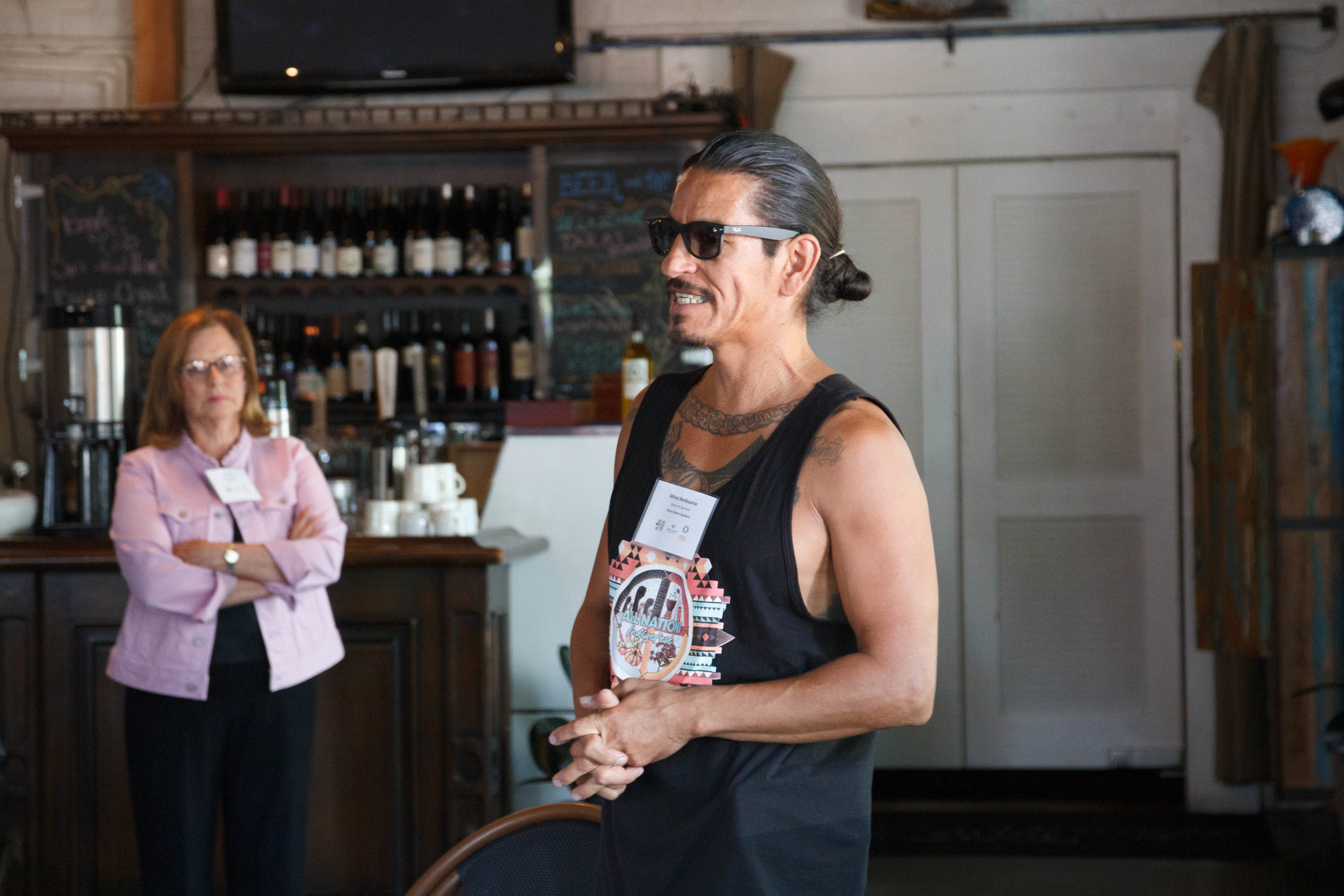
Participants gave feedback online and in-person. During the event, a cross-section of organizations provided lightning-round presentations, highlighting barriers, opportunities, proven models, and recommendations that demonstrated the breadth and diversity of partnerships, the creativity and responsiveness of solutions, and some compelling outcomes to date. These are the foundations of our recommendations to the federal government, which represent the needs and interests of the Sacramento Region. The recommendations range from streamlining specific regulations and providing increased flexibility, to investing in impact models that can be scaled and replicated across the country.
Several clear themes and recommendations were identified in the convening, that if adopted, would greatly facilitate systemic solutions to systemic challenges within our region and across the country. The recommendations reflect the Sacramento region’s partner-driven solutions that were effective in trying to address the rapid increase in food insecurity levels, lack of access to healthy foods, major supply chain gaps, and accelerated job and income loss during the start of the pandemic. Several strong models shared during the event are tangible, tested, and outcome-driven, and are reflected in the recommendations and in the supporting materials.
The recommendations build off the 2021 Sacramento Region Food System Action Plan, developed in Fall 2021 by Valley Vision in partnership with the Sacramento Region Community Foundation. These activities help position the Sacramento region’s future as a global innovator and leader in sustainable agriculture, food, and health.
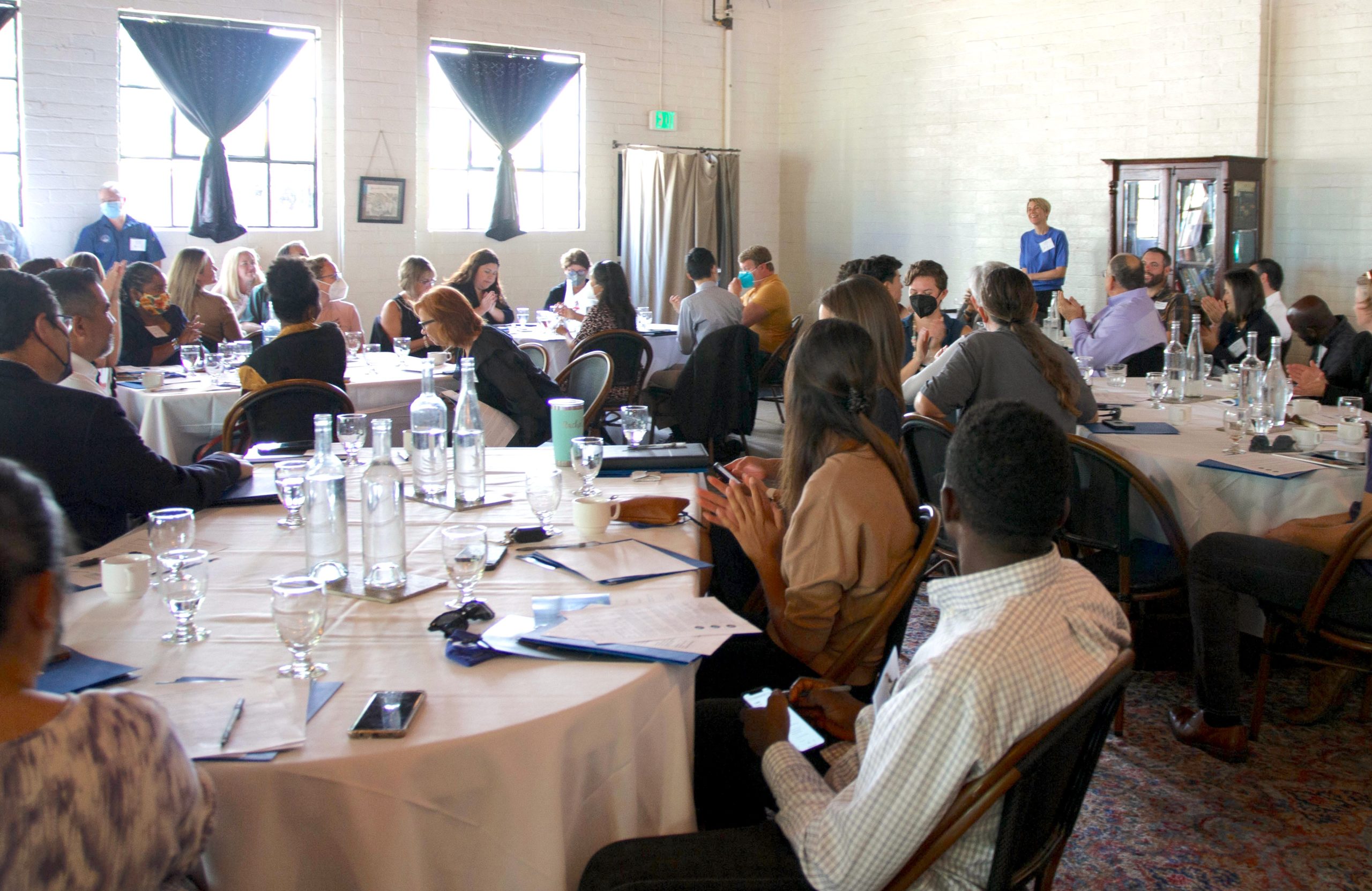
Special thanks to our board members who attended, including Linda Cutler, Shawn Harrison, Chelsea Minor, Clay Nutting, Meghan Phillips, and Lori Rianda. Moving forward, we will incorporate this document into future efforts as we work to reduce food insecurity and strengthen the region’s food system.
To keep up with Valley Vision’s Food and Agriculture work to advance livability in the Sacramento region, email Grace.Kaufman@valleyvision.org to be added to the listserv!
Grace Kaufman is a Valley Vision Project Manager working in the Food and Ag and Clean Economy impact areas
The Livability Summit by Valley Vision
Valley Vision announces a new kind of visioning conversation about the health and well-being of our communities and what we can do together to ensure everyone has access to the quality of life we all deserve.
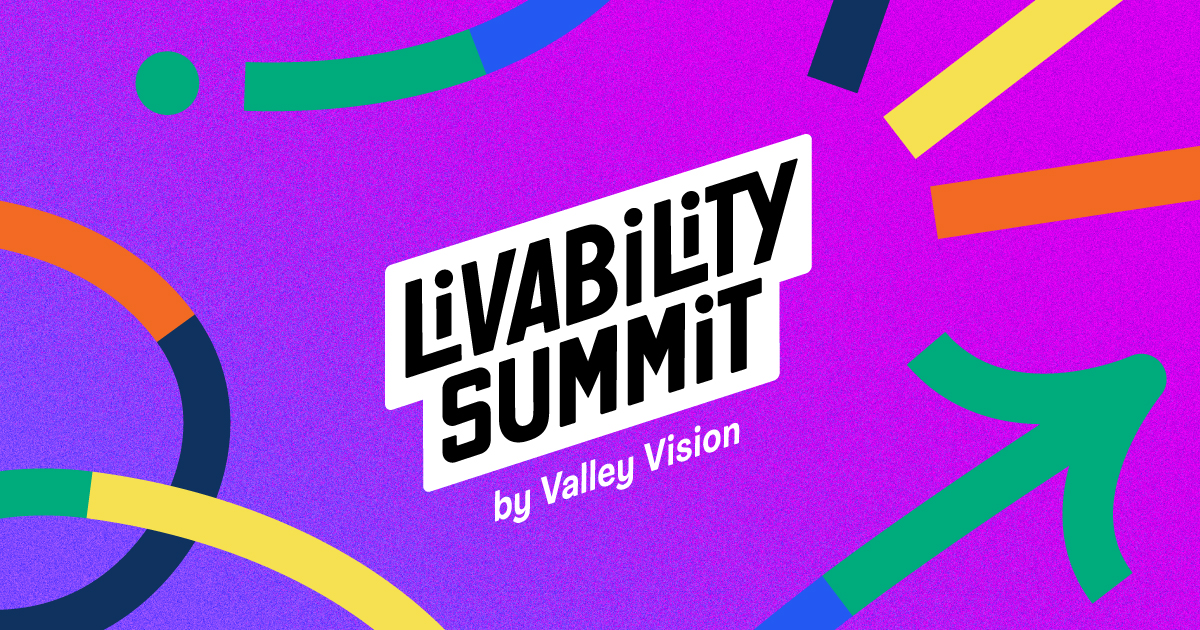
Valley Vision routinely conducts regional opinion polling to better understand the public’s view on important issues. Differences in where we live, how we live, and our make-up create differing experiences and therefore varying viewpoints on issues like transportation, healthcare, food access and education.
Disparities in experiences are especially evident when talking about quality of life.
The last time we fielded The Livability Poll was in 2018. It was pre-pandemic and the region was on an economic upswing. Things were a lot different then. We believe it is critical to understand how people’s day-to-day experiences may have shifted over the four years since we last surveyed this topic, especially in light of unprecedented hardships that changed so many lives in so many significant ways.
Our most recent Livability poll was fielded in June and it revealed key findings about quality of life for people in our region. For example, in 2018, our findings showed that some residents were feeling left behind and worried about rising housing costs, increasing poverty, and fast-changing neighborhoods. The newest poll showed that cost of housing has grown as the biggest concern for many and also that concerns surrounding mental well-being were notably higher than pre-pandemic times.
For Valley Vision, supporting a high quality of life for all by advancing equity, sustainability and prosperity is our core mission. That is why we will host a regional conversation in the fall that brings community members together to explore ways that we can create unified actions toward improved livability for everyone.
Our full set of research findings will be revealed at the first-ever Livability Summit on October 4th where community members like you can take part in a new kind of conversation. Using Valley Vision’s Livability Poll findings as a wellness check for the region, we will engage in an informed dialogue, imagine ways to improve economic, social, health and wealth in all communities across the region, and seek to define the actions steps we can take collectively as a community to make change.
Addressing the challenging issues we face requires connection to others and a sense of possibility for the future. It is in this environment that we developed the vision for the Livability Summit, an event where “your voice belongs, your voice makes change”. More than just the event slogan, this message reflects our full intention: To create a welcoming place for connection and honest conversation, and a space for the community to come together to take action toward a better tomorrow.
To achieve this, we are focused on a few things:
- Build a program that speaks to important issues in our communities
- Create space for interactive talks with one another about what you are hearing and experiencing
- Offer honest storytelling from real people in real neighborhoods
- Ensure all voices and diverse communities are welcome
I believe that at its best, Valley Vision builds connections across our region. This year’s Livability Summit is our first run at creating an annual event where our community can come together to reflect on how our region is doing across our most important issues, connect with each other in ways we haven’t before, and collaborate on unified actions that move us forward.
The Livability Summit is a community event for everyone.
If you care about improving the health, wellbeing, and equity of our communities, your voice belongs in these important conversations and we hope you join us on October 4th. Register here.

Get Connected! California: A Call to Action
New Campaign Helps to Close the Digital Divide by Providing Affordable, High-Speed Internet to Low-Income Families

The COVID-19 pandemic laid bare throughout our region and nationally the existing and pervasive disparities in access to affordable, reliable high-speed Internet. These disparities accelerated through the rapid shift to remote work and learning, online access to vital services, e-commerce, and social connectivity. This Digital Divide hinders the upward mobility of unserved and underserved communities, resulting in inequities across all aspects of life, with profound economic and social impacts on communities.
One important solution to bridging the Digital Divide is the Affordable Connectivity Program (ACP), a Federal Communications Commission (FCC) program helping families and households get connected to affordable broadband and devices through a monthly subsidy. The program helps to ensure that eligible households can access affordable high-speed internet for school, work and healthcare, among many other needs.
However, enrollment levels for this important program are very low. More than 385,000 households are eligible for this program in our region, but only 89,675 households have enrolled – just 23% overall. There are still more than 295,000 eligible households which are unenrolled, a gap of 76% must be filled in order to bridge the Digital Divide. Enrollment rates vary by county – see table below. We are leaving behind subsidies for our families worth millions of dollars in monthly Internet subscription fees behind.
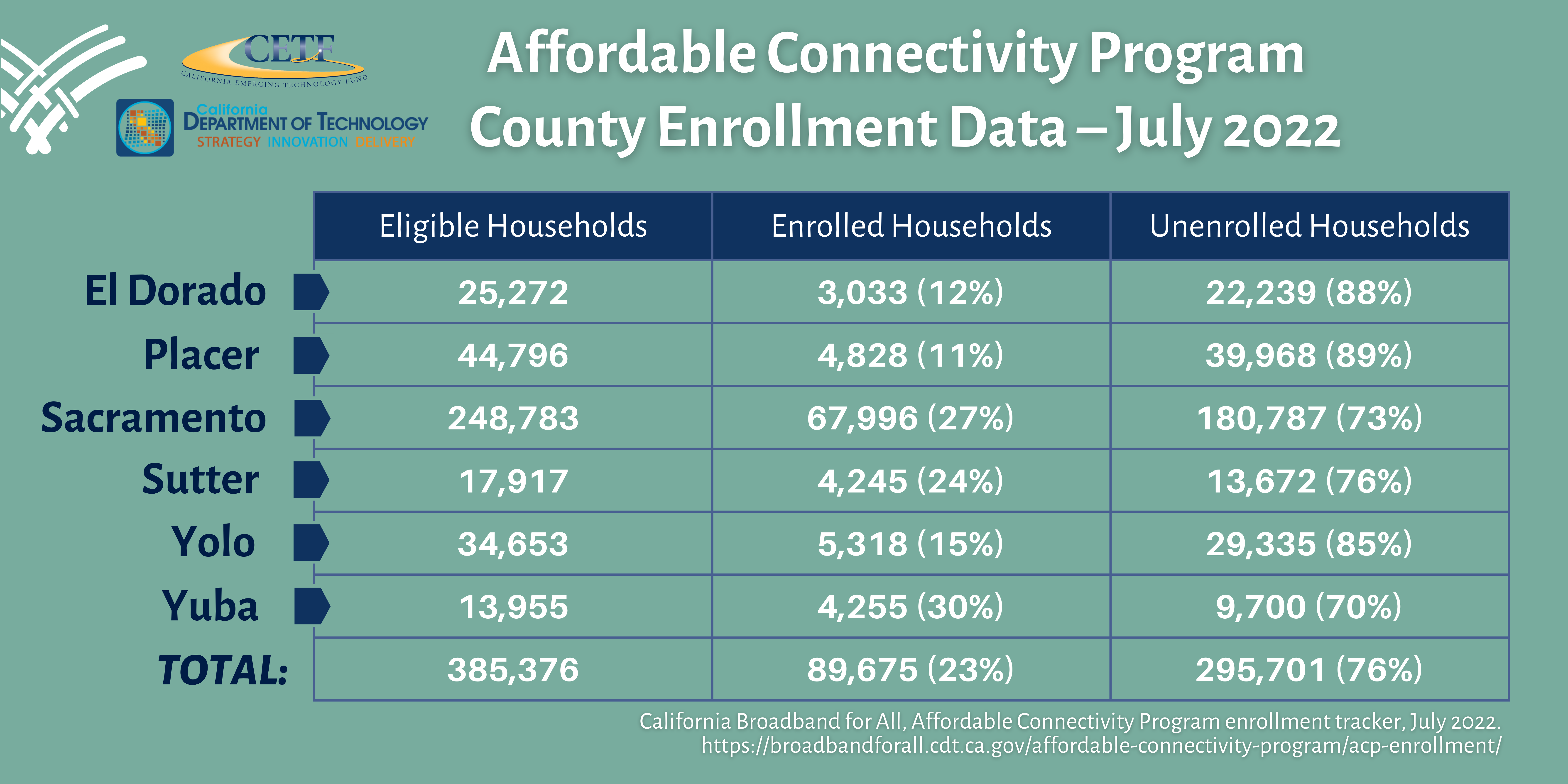
Call to Action: CETF Get Connected! CA Statewide Mobilization
A similar gap statewide is why California leaders are mobilizing to greatly expand ACP enrollment. In March 2022, the California Broadband Council (CBC) issued a “Call to Action” to get 90% of all eligible low-income households online by 2024 with high-speed internet service, and 95% by 2027.
In response, the California Emerging Technology Fund (CETF), along with the California Department of Technology (CDT), California Department of Education (CDE), California State Library, and California State Association of Counties (CSAC), are coordinating a statewide mobilization campaign to promote the Affordable Connectivity Program (ACP) known as GetConnected! California.
Through this campaign, partners will distribute ACP information to all eligible recipients, and are working together with a statewide network of community-based organizations (CBOs) who are the “trusted messengers” to organize in-person sign-up locations to assist residents in ACP enrollment.
The direct communications and mobilization campaign is focused on August 2022 as the first Get Connected! California month, when students are returning to school and in coordination with back- to-school activities. The mobilization efforts will distribute information about the ACP benefit, eligibility requirements, and where to get enrollment help to reach every family with a child on the National School Lunch Program (NSLP), all participants on Medi-Cal and CalFresh, Pell grant students, and library patrons in priority neighborhoods throughout the state.
Get Connected! California mobilization is happening now! Given that 90% of the ACP-Eligible Households are on Medi-Cal, CalFresh, and National School Lunch Program, the first phase of organizing has been to ensure that all Counties and Schools (with support of State Agencies) are preparing to reach all the households on these public assistance programs.
In our region we are working with partners on strategies to enroll eligible households for the ACP. Some of the activities include:
- Promoting Get Connected! California through local contacts
- Distributing information to eligible households
- Hosting an enrollment assistance site on Get Connected! California Day – August 27, 2022
- Coordinating Get Connected! California activities for your county
- Supporting future Get Connected California! events and activities, including back to school activities
- PSA placement
With all our combined efforts, unserved and underserved households who are eligible will have access to affordable high-speed internet and we will be one step closer to bridging the Digital Divide. Let’s all mobilize together to bring broadband access to the most disadvantaged communities!

Thank you to all our partners, and a huge thank you to the California Emerging Technology Fund (CETF) in leading this “Call to Action” and for supporting Valley Vision in this effort!
See below for more information on the ACP program.
The FCC’s Affordable Connectivity Program (ACP): Who is Eligible?
Program Benefits for Eligible Households:
- A discount of up to $30/month for internet service
- A discount of up to $75/month towards internet service for households on qualifying Tribal lands
- A one-time discount of up to $100 towards purchase of laptops, computers, or tablets from participating providers
Affordable Connectivity Program Eligibility:
Per the FCC program guidelines, a household is eligible if the household income is at or below 200% of the Federal Poverty Guidelines, or if a member of the household meets at least one of the criteria below:
- Received a Federal Pell Grant during the current award year;
- Meets the eligibility criteria for a participating provider’s existing low-income internet program;
- Participates in one of these assistance programs:
- The National School Lunch Program or the School Breakfast Program, including through the USDA Community Eligibility Provision;
- SNAP
- Medicaid
- Federal Public Housing Assistance
- Supplemental Security Income (SSI)
- WIC
- Veterans Pension or Survivor Benefits
- or Lifeline;
- Participates in one of these assistance programs and lives on Qualifying Tribal lands:
- Bureau of Indian Affairs General Assistance
- Tribal TANF
- Food Distribution Program on Indian Reservations
- Tribal Head Start (income based)
Visit California Department of Technology’s webpage for Broadband For All to track enrollment in your county and region, where up to date information and enrollment progress is made available by CETF in partnership with the Geographical Information Center at Chico State Enterprises (CSE).
To continue staying up to date with all of the region’s broadband efforts, subscribe to Valley Vision’s e-Connect email newsletter!
Kathy Saechou is a Valley Vision Project Associate supporting its Clean Economy and broadband initiatives.
Trish Kelly is Valley Vision’s Managing Director, leading its food, agriculture, and broadband initiatives.
Caitlin Blockus and Navreet Hundal also contributed to the writing of this blog.
A Dose of (Climate) Reality
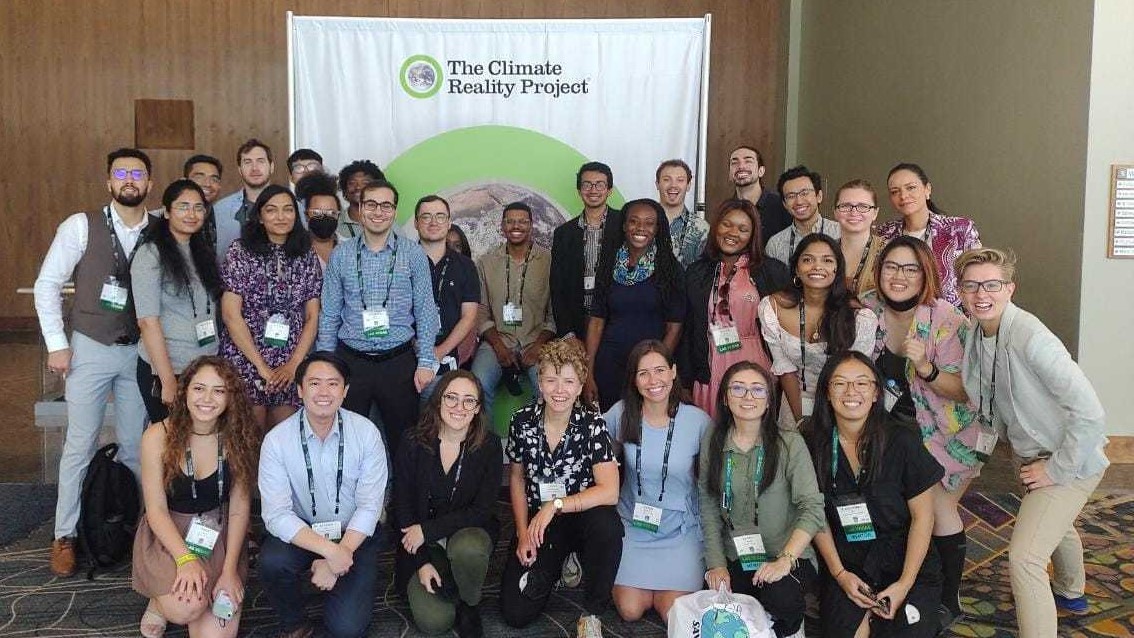
A blast of 109-degree air hit me as I exited the absurdly air conditioned Planet Hollywood casino on the Las Vegas Strip. It was June 10th, 2022, and Southern Nevada was having its hottest day of the year (thus far).
Ironically, I was there to learn, collaborate, and connect as part of the 2022 cohort of the Climate Reality Leadership Corps. So much for glitz, glamour, and excess – things were getting very real in the Nevada desert.
The Climate Reality Project is the organization founded by former Vice President Al Gore using proceeds from the unexpected success of 2006’s ‘An Inconvenient Truth’ film and accompanying book. Today, the organization is an international nonprofit on the leading edge of education and advocacy related to climate change, and the Leadership Corps program is intended to build the capacity of climate leaders and their networks for action.
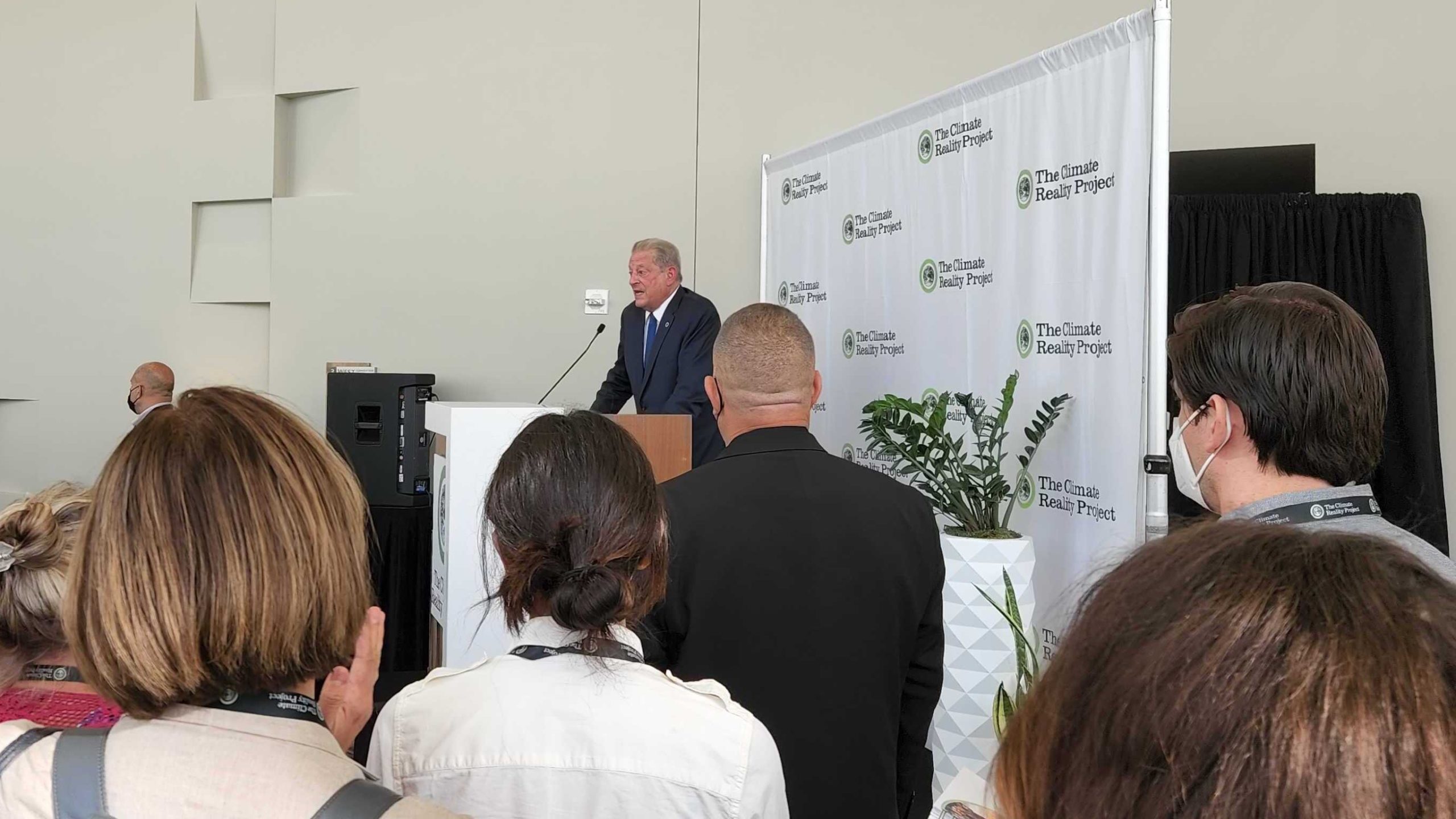
Mr. Gore continues to anchor the organization in many ways, but over the course of two-and-a-half days we were able to get to know Climate Reality’s talented and diverse staff, as well as activists, scientists, and skilled communicators from across the Americas, including dozens of Indigenous leaders on the frontlines of climate action in their communities (with an emphasis on the American Southwest). I was particularly excited to connect with William J. Barber III, Climate Reality’s Director of Climate and Environmental Justice and the son of William Barber II, a well-known preacher and co-chair of the national Poor People’s Campaign, as well as Dr. Elena Krieger, Director of Research with PSE Energy (Physicians, Scientists, and Engineers for Healthy Energy) and a partner in community air protection projects in California.
There is strong connectivity with the work that Valley Vision has been doing for years to advocate for clean air policies, advance neighborhood-based air monitoring and emissions reduction efforts, and to support innovative projects like the California Mobility Center.
That being said, I was participating primarily as a member of the Global Shapers – Sacramento Hub, a local group affiliated with the World Economic Forum’s international network of over 14,000 young leaders across 448 city-based Hubs in 146 countries. The Sacramento Shapers have been working with Climate Reality locally on a water conservation project, conducting door-to-door outreach, distributing resources, and providing micro-grants to artists working on water conservation-related projects.
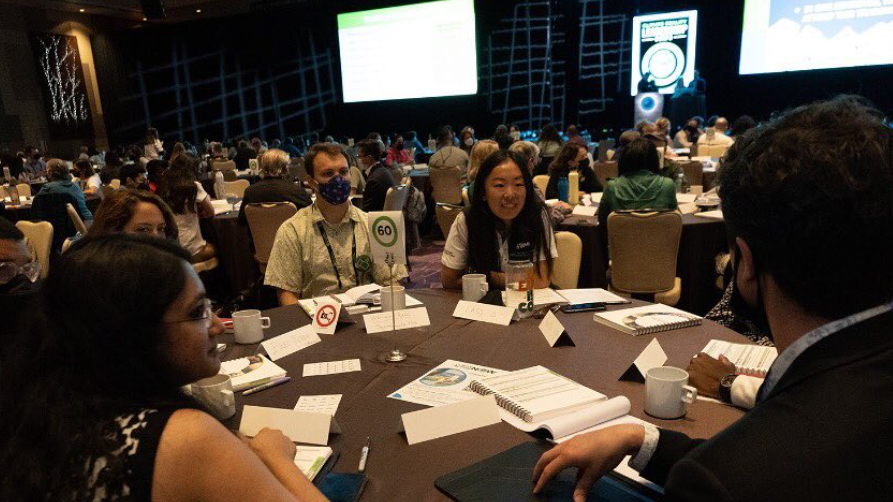
Leadership Corps participants were treated to a full-length, up-to-date version of the famous ‘An Inconvenient Truth’ PowerPoint presentation on the first day of the training, as well as a shortened 10-minute version, both delivered by Mr. Gore. We also learned how best to communicate about climate change, and reflected on our own personal brand of climate activism taking into account our unique skills and backgrounds. We developed and practiced hands-on skills, and were presented with powerful information about the latest climate science, best practices, and technological advancements needed to support a global transition away from greenhouse gas use.
The training made very clear the linkage between the global climate crisis and the environmental racism faced by the communities of color most impacted by climate change. People of color in the US are exposed to up to 63% more pollution than they produce – while white people are exposed to 17% less. Fossil fuel air pollution contributed to nearly one in five premature deaths in 2018. Sometimes the climate crisis can feel nebulous to those who don’t reside in frontline communities, and this relationship is incredibly important to make evident when doing this work.
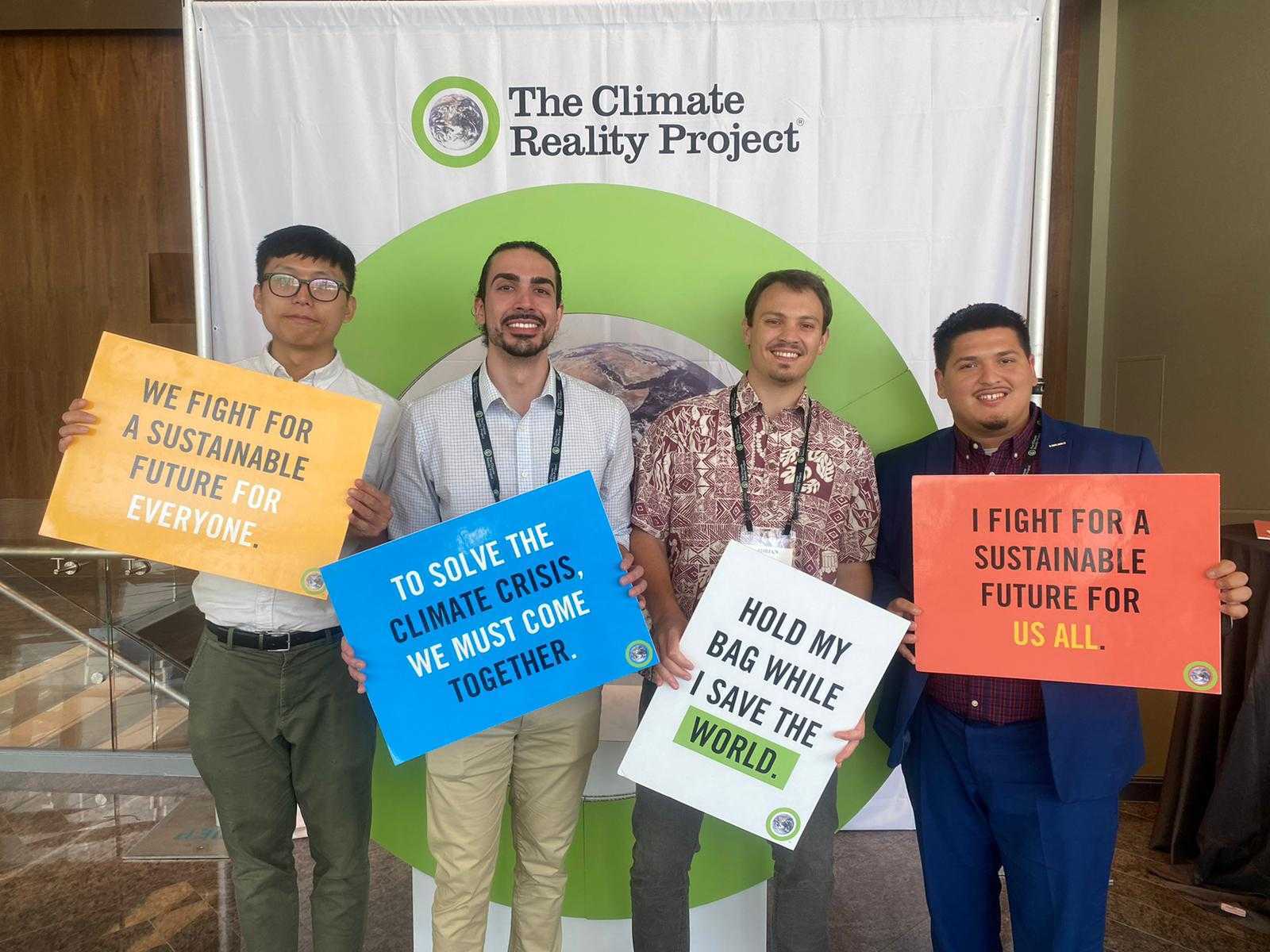
Across the world-class speakers and hands-on trainings, there were several direct quotes that really resonated with me:
- Shabd Singh: “How do you build people power? The answer is simple – one conversation at a time.”
- Van Jones (not present): “The green economy should not just be about reclaiming throw-away stuff. It should be about reclaiming thrown-away communities.”
- Alexa Aispuro Loaiza: “White allies can support communities of concern in the following way – lead by following.”
- Tim Guinee: “Action is the antidote to despair about the climate crisis.”
All that being said – hope is critical if there is to be progress. Despair is just another form of denial. And if we truly care about our planet and its people, we will build the relationships, educate our communities, and advocate for solutions that benefit those most impacted. I’ll end this blog the same way that Mr. Gore closed the two-and-a-half-day training: “Political will is a sustainable resource.” Let’s do this!
Note: Masks were required at all times except during meals and while taking photos, as a COVID-19 precaution. Photos used as part of this blog do not reflect the in-person experience.
To keep up with Valley Vision’s work to advance livability in the Sacramento region, subscribe to our Vantage Point email newsletter!
Adrian Rehn is a Valley Vision Project Leader overseeing the Cleaner Air Partnership, Sacramento Neighborhoods Activating on Air Quality, and Valley Vision’s flagship ‘Vantage Point’ email newsletter.
Forestry Management Careers: A Critical Need
On April 28, Valley Vision hosted a virtual Forestry Management Regional Advisory to bring stakeholders and industry partners together to discuss the field’s current state, future projections, and areas of growth. Critical land management challenges such as wildfires, droughts, and the impact of invasive species contribute to the high demand for forestry management job applicants. However, labor market data and research detail a prominent gap between this need and the availability of candidates in the field.

This event featured labor market projections from Melissa Kovacs, Senior Project Analyst at the Center of Economic Development, CSU Chico, and Ebony Benzing, Research Manager at the North/Far North Centers of Excellence, and an industry panel that included:
- Ann Anderson, Beale Mountain Forestry, Owner & Forester
- Jeremy Dorsey, U.S. Forest Service, Hume Lake Ranger District & Sequoia National Forest, District Ranger
- John McCarthy, CAL FIRE, Forester & Wood Products/Bioenergy Program Administrator
- Tony Ortiz, Mountain Enterprises, Field Safety Specialist
- Craig Ostergaard, Sierra Pacific Industries, South Sierra Reforestation Manager
At the beginning of the event, Kovacs presented findings from the 2021 Forest Sector Workforce Needs Survey created in partnership with the Statewide Wildfire and Forest Resiliency Task Force. This survey yielded 113 responses from forestry management employers across the state and sought to identify key challenges and needs within the industry. The research revealed a sizable gap in the forestry industry’s workforce with the majority of respondents indicating their organization is currently hiring for 1-5 open positions with the majority looking to hire either immediately or within the next 12 months. Another important result was the indication of three major obstacles to filling these positions; high cost of living (45.59%), a small pool of candidates in the area (24.56%), and lack of available housing (12.81%).
Benzing provided regional labor market information, demonstrating forestry management jobs are expected to grow by an average of 6% by 2025 in the Greater Sacramento region. The strongest occupational demand is in professional positions which include environmental scientists, soil & plant scientists, and foresters. Management positions are projected to have the highest percentage growth, with the second-largest increase slated to come from specialty positions (fallers, log graders/scalers, surveyors, tree trimmers, and mapping technicians).
Panelists encouraged students and educators to push for early exposure to forestry management careers and real-world, hands-on experience. Paid internships are a valuable way for prospective applicants to gain an understanding of the demands and nature of these jobs. Although these positions are generally during the summer months, panelists indicated winter is the best time to begin the internship and job search process. Anderson of Beale Mountain Forestry mentioned job shadowing as an alternative to internships, as they are a quicker, less-demanding method to show the daily responsibilities and expectations of someone who works in the industry.
Panelists agreed that interpersonal skills are of great importance and demand in the forest industry. Communication, time management, organization, and teamwork are integral skills across all occupations creating an opportunity for forestry management education programs to focus on expanding soft skill development. In addition to strengthening these necessary skills, Steven Casperite, Assistant Principal at the Placer School for Adults, discussed a pilot program developed in partnership with Mountain Enterprises to expand the talent pipeline by offering contextualized English Language education concurrent with on-the-job forestry management training to serve immigrants and refugees. Casperite also commented that the opportunity to extend training opportunities to incarcerated individuals prior to release can also funnel more candidates into the industry. As Casperite said, “There are a lot of opportunities and employees out there that we can be putting to work—that want to work—but we’ve got to remove the barriers.”
Valley Vision’s employer and industry advisories are funded by Los Rios Community College District with Strong Workforce Program funds. Additionally, the Capital Region’s four workforce boards co-sponsor the advisories; SETA/Sacramento Works, Golden Sierra JTA, YoloWorks, and North Central Counties Consortium.
To keep up with Valley Vision’s work to advance a future-ready workforce in the Sacramento region, subscribe to our 21st Century Workforce email newsletter!
Danielle Susa is a Valley Vision Project Associate supporting initiatives within the 21st Century Workforce impact area.
Renee John is the Director of Workforce Development managing initiatives within the 21st Century Workforce impact area.
Cap-to-Cap Returns to D.C. – A First-Timer’s Experience
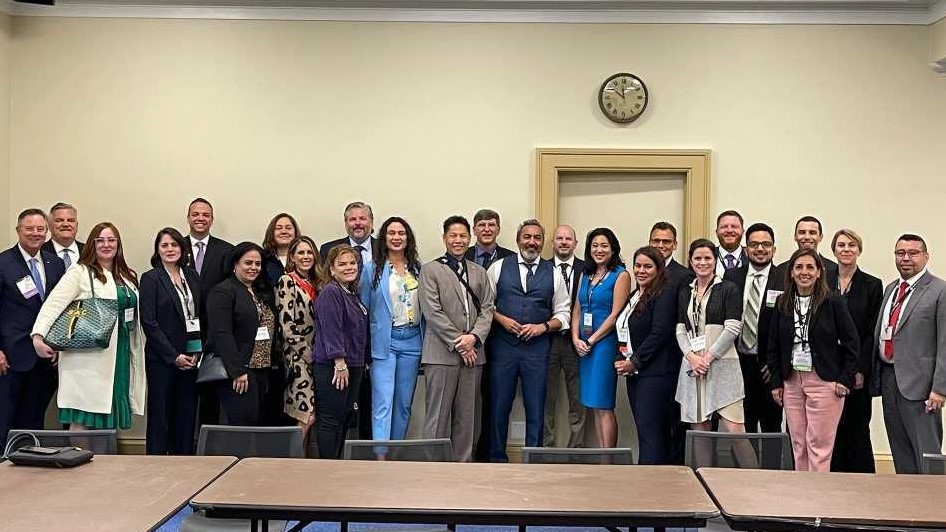
After over two years of a mostly virtual work environment, I didn’t quite know what to expect from the Sacramento Metro Chamber’s annual week-long Cap-to-Cap program. Not only would it be my first Cap-to-Cap experience, it would also be one of the first few times since March 2020 that I would be interacting with folks face-to-face, instead of Zoom square-to-Zoom square. In conversations with “veterans” (those who’ve attended prior Cap-to-Cap trips), I gathered that it was going to be a whirlwind week of events, meetings, and huddles — with few chances to catch a breath, and many opportunities to connect with regional and federal leaders.
To be sure, our region’s annual delegation to D.C. is a force – The Chamber’s Cap-to-Cap program has been happening nearly every year since 1970, representing the largest and longest-standing delegation of its kind. In that time, Cap-to-Cap has driven steady and consistent advocacy, ushering significant advances for business and community development, an inclusive economy, and a vibrant, healthy and connected region.
This year, Valley Vision staff played an active leadership role in Cap-to-Cap’s policy advancement. We Co-Chaired or served as Issue Experts on the Air Quality, Economic Development, and Food and Agriculture teams, and participated in the Workforce and Education team. On each team, we shaped policy papers and communicated critical regional issues to federal agencies and our elected officials, as well as continued building a network of relationships with federal legislative and agency representatives that continues throughout the year and brings added benefit to the region.
It was an honor to be able to champion our region side by side with local elected officials and jurisdictions, foundations and nonprofits, utilities, healthcare providers, industry representatives, among many others. And the running joke — that of course we all had to fly clear across the country to meet people from our own region — certainly has some truth to it. Because being in our nation’s capital, against the backdrop of Capitol Hill and the national monuments, with the common goal of elevating the needs and priorities of our region, brings us all together in an exceptionally meaningful way and gives us the opportunity to connect with folks who we don’t regularly cross paths with back home.
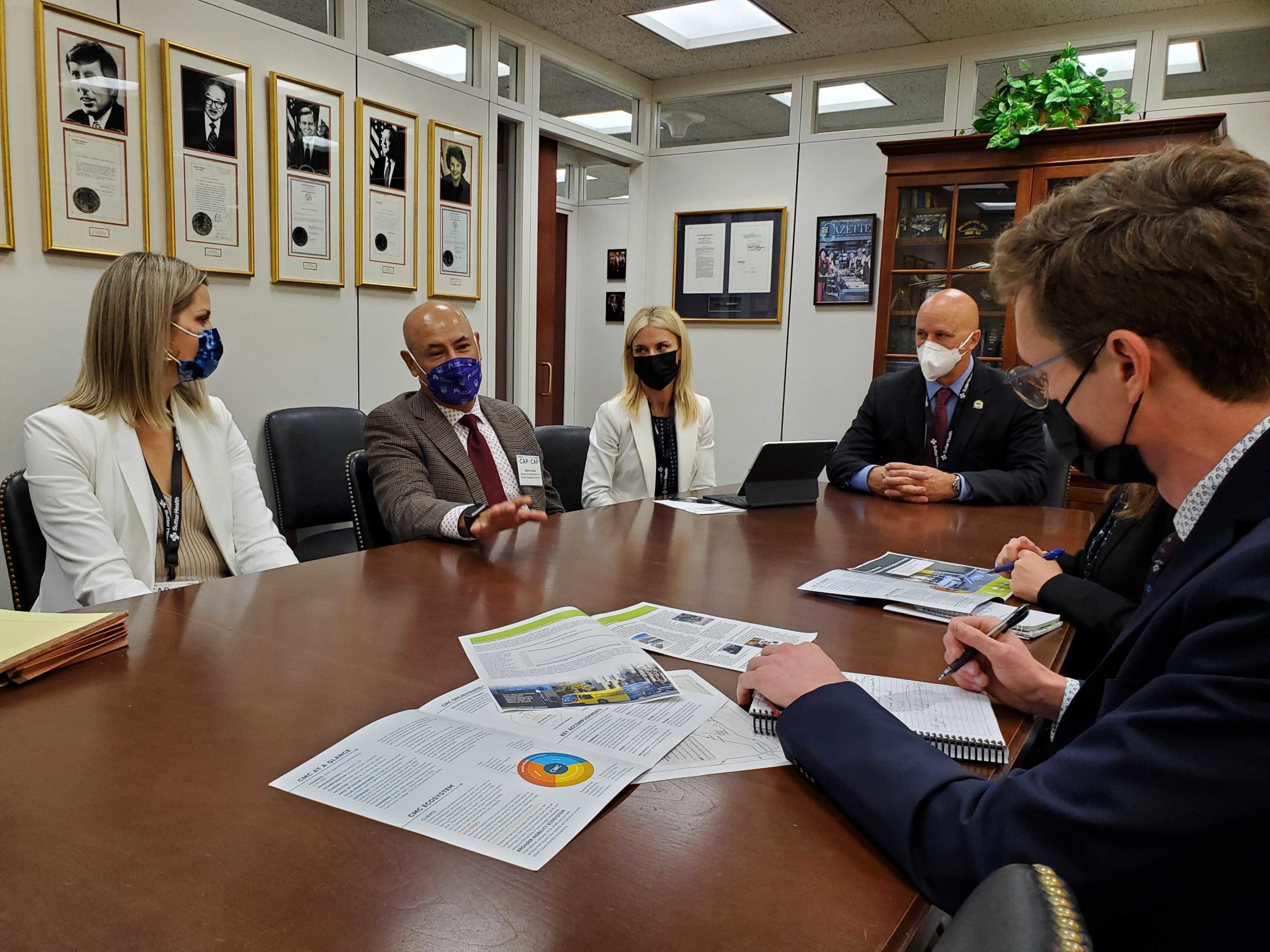
I’m especially grateful to have participated in the Cap-to-Cap program at such an important time for our region. New, unprecedented investments in regional economic recovery — financial commitments to infrastructure, economic, environmental, and community resilience through both state and federal government channels — present our region with the opportunity to rebuild and grow sustainably, with a commitment to community and equity at the center of it. These include the Community Economic Resilience Fund (“CERF”), a one-time use of State general funds that will distribute $600 million to regions across California to support inclusive and low carbon economic development; a $6 billion investment in California’s broadband infrastructure and enhancing internet access for unserved and underserved communities; and billions in American Rescue Plan Act funds distributed through the Economic Development Administration for advancing high-growth sector and workforce priorities, just to name a few. We’ve certainly got our work cut out for us, to ensure that our region makes the most of this once-in-a-generation opportunity.
Championing our region to elevate its challenges and successes, breaking bread with regional change-makers, making my way around Capitol Hill — my first Cap-to-Cap experience was one for the books, and I’m already looking forward to the next one!
To keep up with Valley Vision’s work to advance livability in the Sacramento region, subscribe to our Vantage Point email newsletter!
Isa Avanceña is Valley Vision’s Manager of Research and Policy.
Leading with Compassion: The Future of Hospitality Careers
On April 22, Valley Vision hosted a virtual regional advisory centered on the adaptations of the Hospitality, Culinary, and Tourism industry through the pandemic. While the sector continues to represent employment below pre-pandemic employment levels, the Greater Sacramento region has recovered 40% of jobs originally lost in this sector. Nationally, wages have increased by almost $3.00 per hour to an average of $19.68.

The event featured keynote speaker Marc Sapoznik, President and CEO of Rancho Cordova Travel & Tourism, labor market information from Aaron Wilcher, Research Director of the Center of Excellence, and an industry panel including:
- Shelly Moranville, General Manager, Residence Inn, Marriott
- Jonathan Modrow, Owner, Bottle & Barlow
- Brittany Claypool, Brand Strategist, Oak Park Brewing
- Andrew Moret, Director of Culinary, Oakmont Management Group
- Marc Sapoznik, President and CEO, Rancho Cordova Travel & Tourism
During the event, panelists described changes and innovations within their companies including moving to fast-casual service with to-go options, producing canned beverages, advancing the adoption of technology, partnering to recruit for talent shortages, and turning a portion of their establishment into community rental space. As Shelly Moranville from Residence Inn, Marriott put it, “We’ve changed the way we do everything.”
“We’ve changed the way we do everything.”
Shelly Moranville
The labor market information presented highlighted a need to fill management positions including General and Operations Managers, Food Service Managers, Personal Service Managers, Entertainment and Recreation Managers, Chefs, and Head Cooks. These positions also offer the highest earnings potential within the industry. The panel agreed on the need for training for management positions highlighting the burnout of their leadership teams from the toll of the pandemic.
Several panelists acknowledged investing more in their current workforce than in the past, including establishing “paths to success” for entry-level employees to gain the skills and experience necessary to prepare them for higher roles. Andrew Moret of Oakmont Management Group discussed their Executive Chef Training Program in development as an example of this upward mobility framework. The panel agreed that learning the career goals of individual team members and helping them achieve them was a best practice. This was just one example of a change to a more employee-centered culture including increased flexibility and accommodation of individual employee needs and schedules. Employers reported altering the availability requirements for existing workers and incoming hires to improve employee retention. As Ms. Moranville stated, “[We] have to be much more flexible to the needs of the associates, and I don’t think that’s a bad thing. As employers, [the pandemic] has forced us to shift and be more understanding of what’s going on in someone’s life.”
The panel agreed the need for high-quality soft skills or essential skills was desperately needed in employment candidates including communication, teamwork, leadership/initiative, cultural and self-awareness, and creativity/adaptability. Jonathan Modrow of Bottle & Barlow stressed the need for an “instinct for care and collaboration”. Mr. Moret closed us with critical words for today’s culture stating the need to lead with “compassion for guests, each other, and yourself” is greatly needed in today’s hospitality workforce.
Valley Vision’s employer and industry advisories are funded by Los Rios Community College District with Strong Workforce Program funds. Additionally, the Capital Region’s four workforce boards co-sponsor the advisories; SETA/Sacramento Works, Golden Sierra JTA, YoloWorks, and North Central Counties Consortium.
To keep up with Valley Vision’s work to advance a future-ready workforce in the Sacramento region, subscribe to our 21st Century Workforce email newsletter!
Danielle Susa is a Valley Vision Project Associate supporting initiatives within the 21st Century Workforce impact area.
Renee John is the Director of Workforce Development managing initiatives within the 21st Century Workforce impact area.
